t going “green” also means making mindful choices that nurture your baby and the planet. From cleaner air and lower energy bills to furniture that grows with your child, every detail can carry practical eco-benefits. Below are twenty actionable ideas—each one crafted to keep your green nursery vision grounded in safety, sustainability, and everyday ease. Dive in and let these fresh concepts spark a space where nature’s serenity and smart design meet.
1. Low-VOC Paint Breathes Easy into a Green Nursery
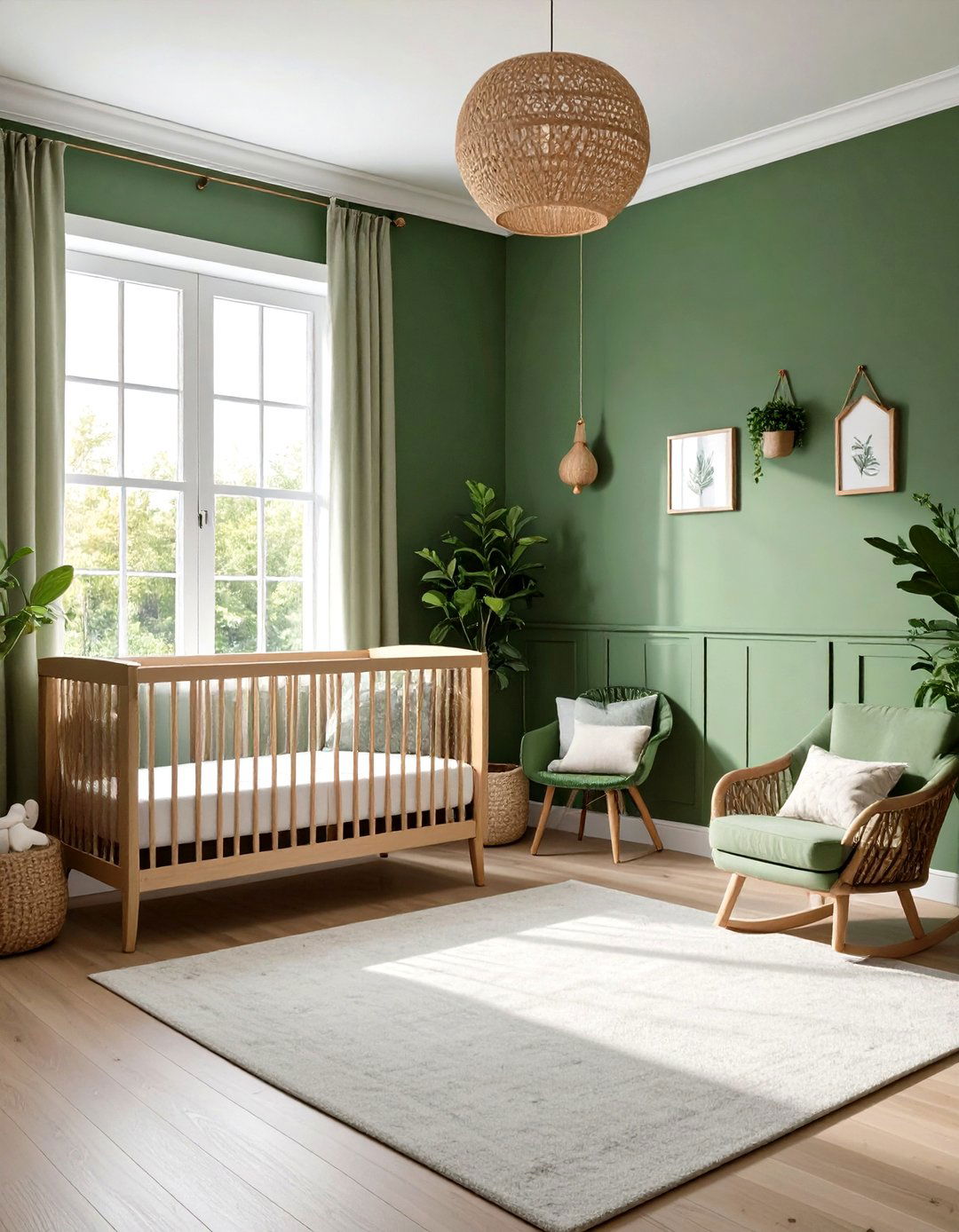
A subtle coat of nursery-safe, low-VOC paint locks in color without locking harmful fumes into the room. Studies link high indoor VOC levels to increased risks of asthma and eczema in children, so switching to certified low-VOC or zero-VOC formulas is a direct boost to indoor air quality. Choose lighter earthy greens to reflect natural light and create a cozy cocoon. Prep by opening windows for airflow; most water-based eco paints cure within 24 hours, minimizing downtime. Keep leftover paint sealed for touch-ups, or donate it to local art programs to prevent waste.
2. FSC-Certified Wood Crib Forms the Sustainable Heart of a Green Nursery
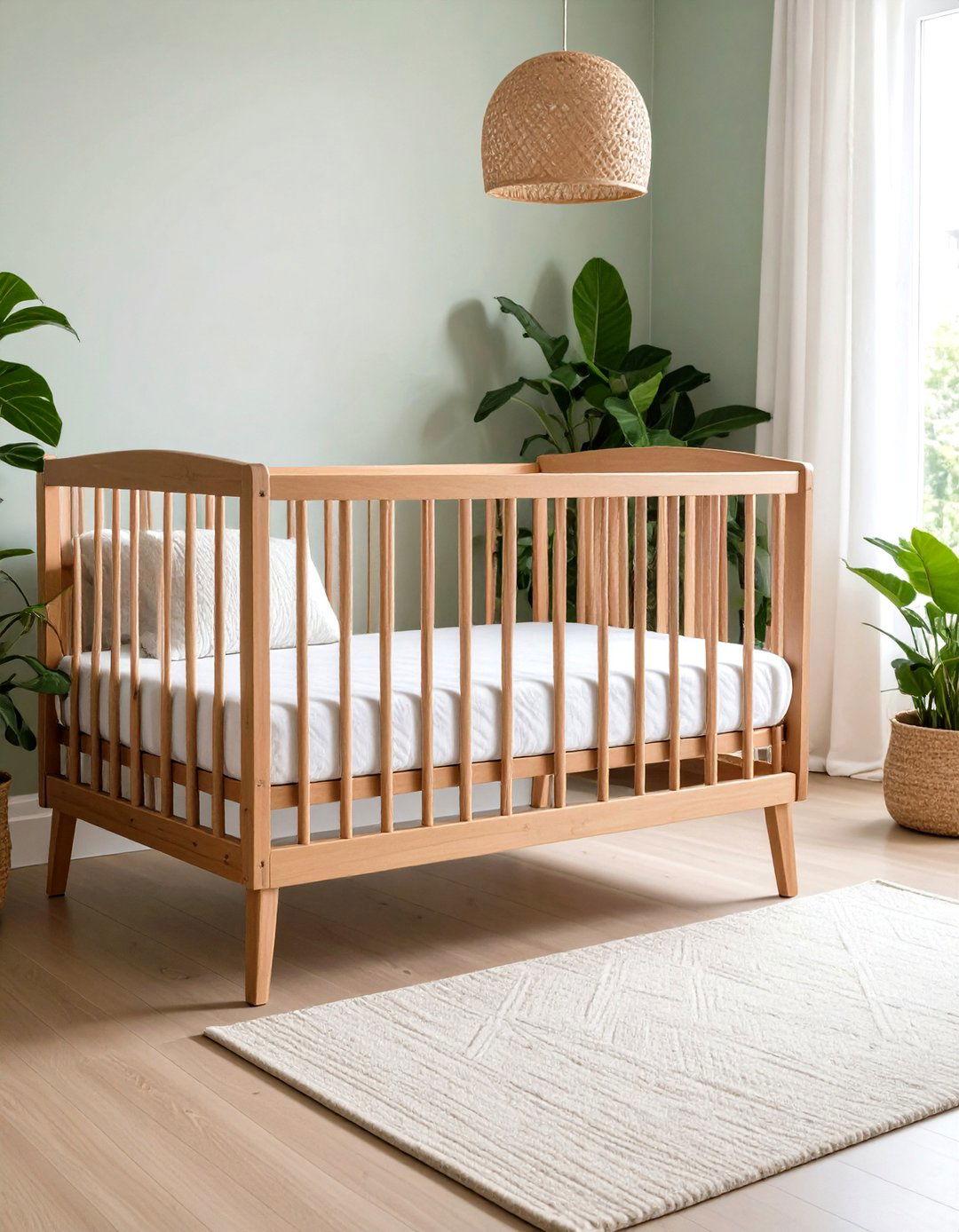
The crib is the nursery’s anchor, so opting for sustainably harvested, FSC-certified hardwood ensures forests are regrown for every tree used. Modern Nursery The Good Trade Look for finishes that are Greenguard Gold-certified to guarantee low chemical emissions. Many modern cribs convert to toddler or day beds, stretching usability for years and reducing landfill impact. Pair the crib with a natural latex or coconut-coir mattress to avoid polyurethane foam and flame-retardant chemicals. Finally, place the crib away from windows and heaters to maintain a stable, draft-free sleep zone.
3. Organic Cotton Bedding Wraps Baby in Pure Comfort
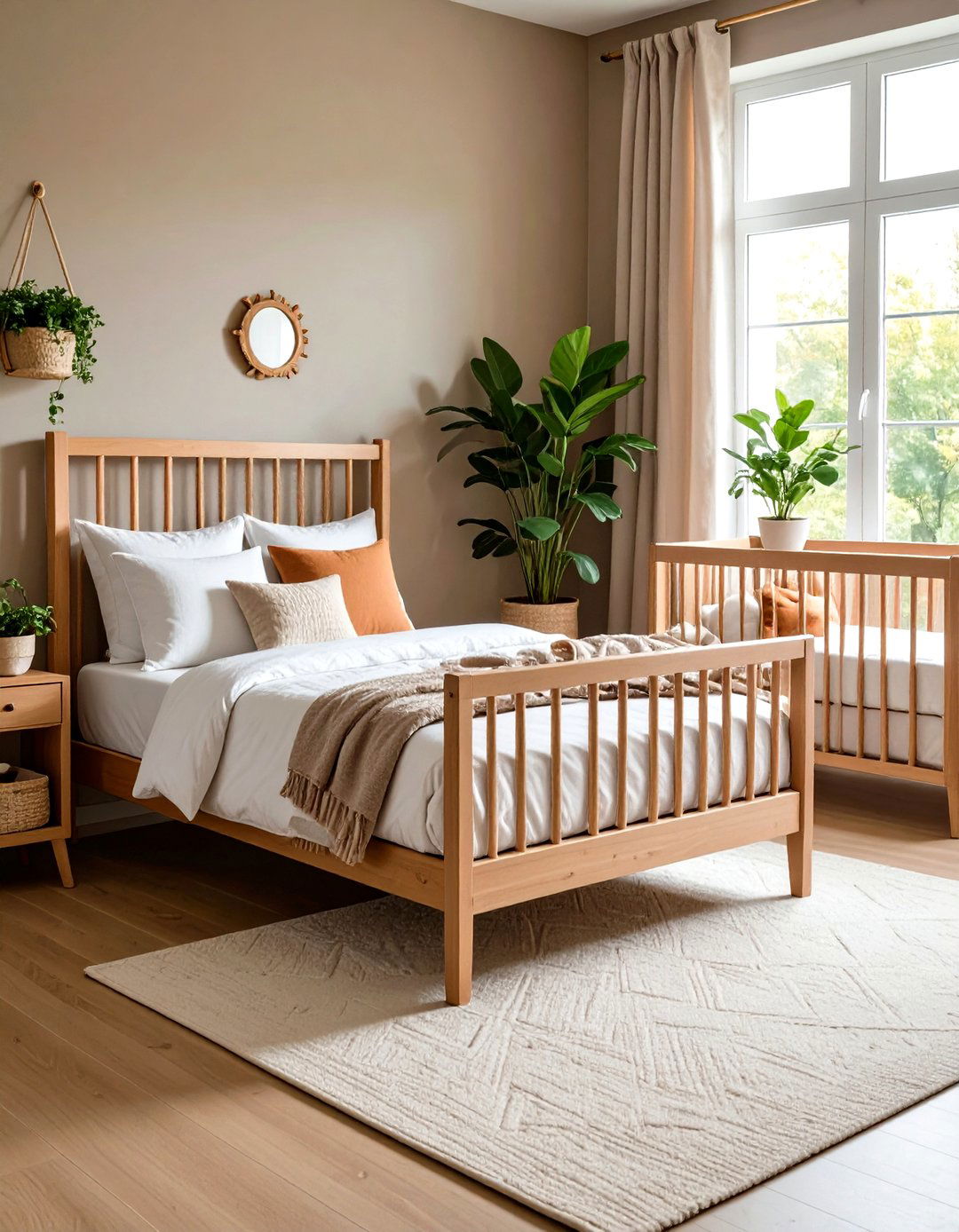
Soft, breathable organic cotton sheets regulate temperature and wick moisture—ideal for delicate infant skin. Global Organic Textile Standard (GOTS) certification bans toxic dyes and pesticides, keeping microplastics and chemical residues out of laundry water. Naturepedic Opt for a snug-fit sheet and skip bumpers or pillows to meet safe-sleep guidelines. Add a lightweight muslin swaddle to layer warmth without overheating. When stains strike, treat them with a paste of baking soda and water; its gentle abrasiveness lifts spills while safeguarding fibers.
4. Upcycled Furniture Gives Green Nursery Style with Zero New Footprint
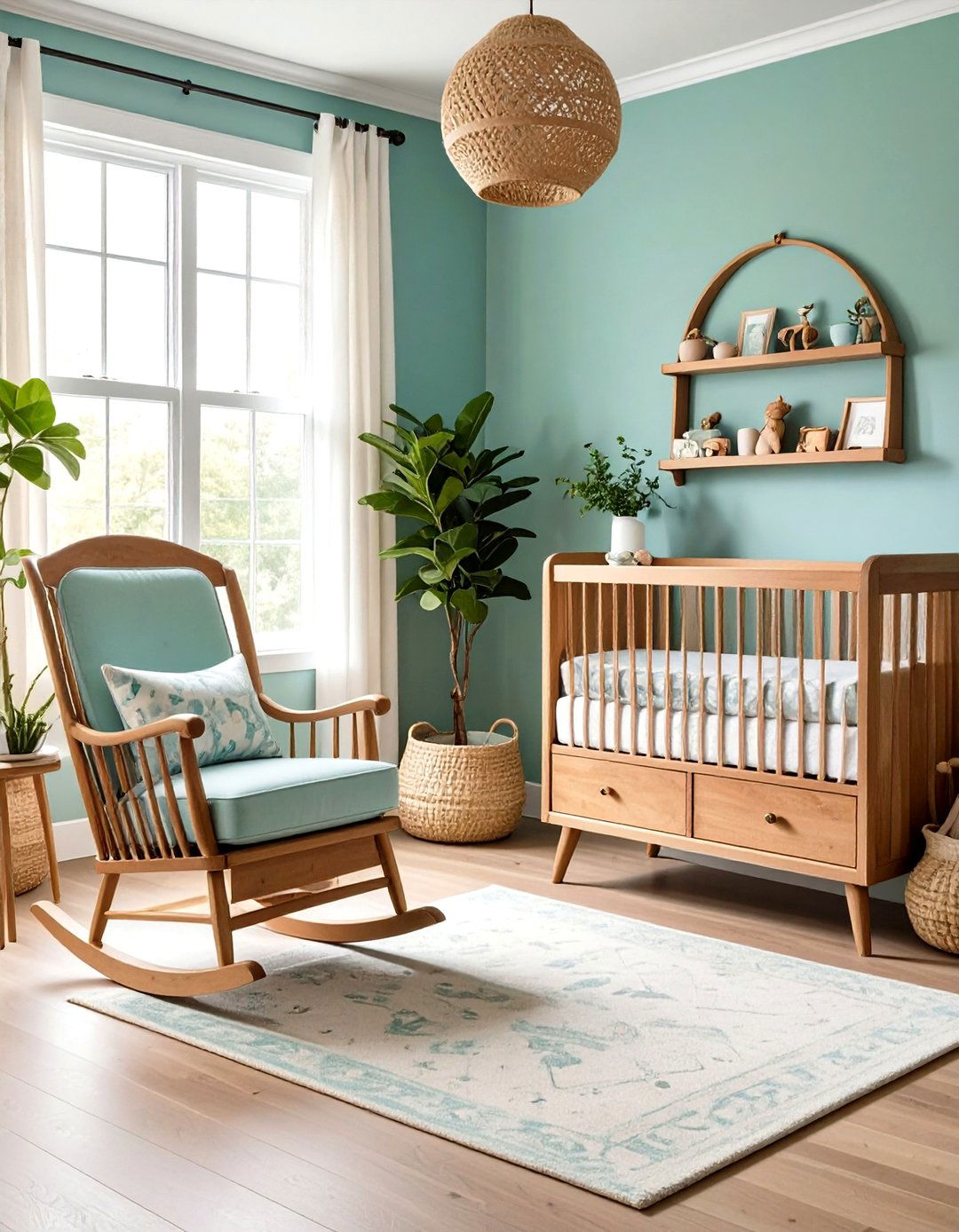
Reviving a vintage dresser or rocking chair saves resources and embeds character into the space. Sand, prime, and finish pieces with milk paint or plant-based sealers for a refreshed, toxin-free surface. Happiest Baby The Spruce Swapping out hardware to brass or bamboo knobs personalizes the look while avoiding plastic. Upcycling also sidesteps supply-chain emissions tied to new manufacturing and shipping. Always confirm older furniture meets today’s safety standards—secure drawers with stops and anchor tall units to studs to prevent tipping.
5. LED Lighting Creates a Soft Glow While Slashing Energy Use
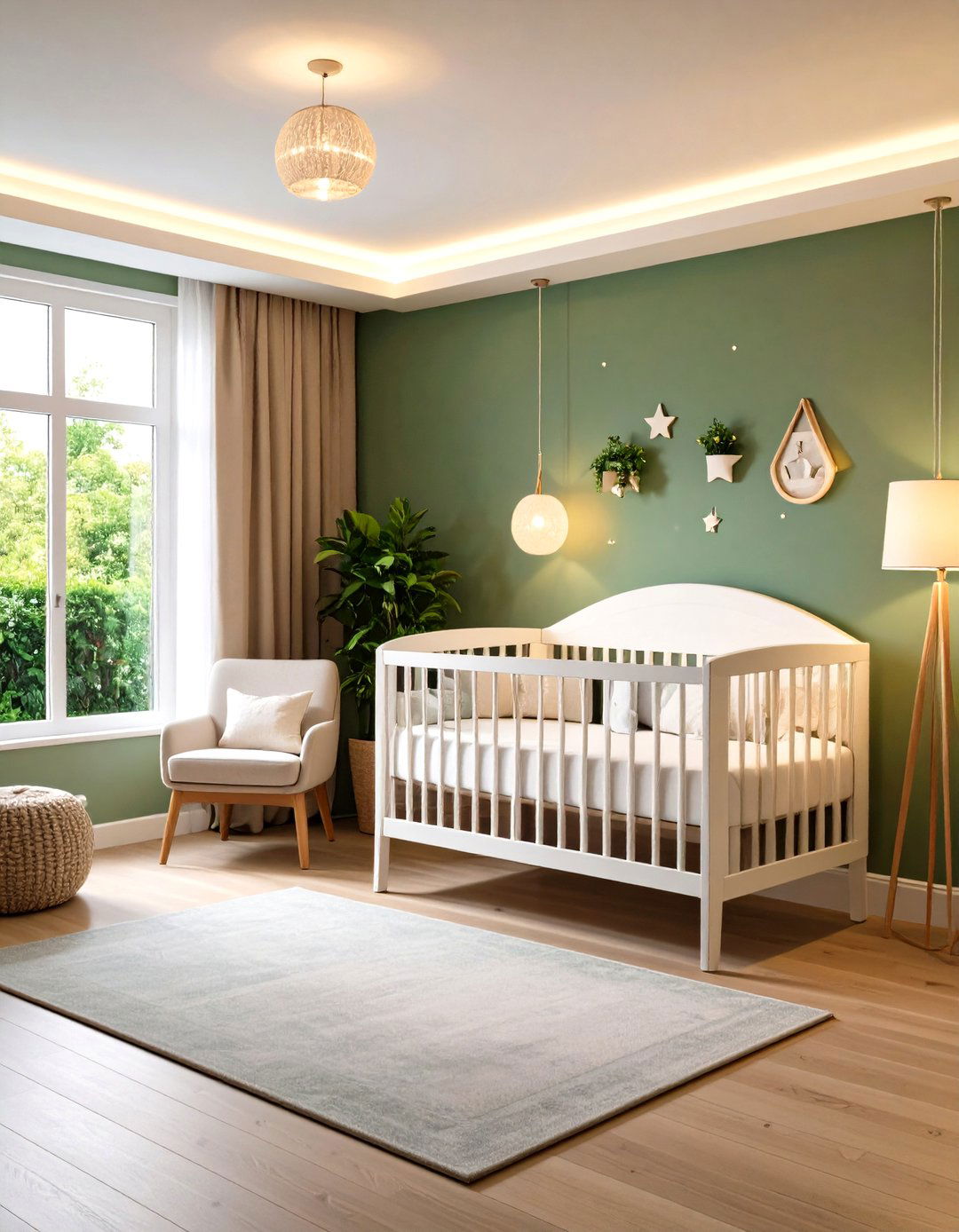
Energy-efficient LED night-lights sip roughly 90 percent less electricity than incandescent bulbs and stay cool to the touch—key for curious little hands. Amazon Pick models with dusk-to-dawn sensors so lights only activate when needed, extending bulb life to ten years or more. Warm-white (2700–3000 K) LEDs foster circadian-friendly ambiance, helping babies settle at bedtime. Installing a dimmer switch offers flexible brightness for midnight feeds without jarring everyone awake.
6. Air-Purifying Plants Bring Living Filtration to a Green Nursery
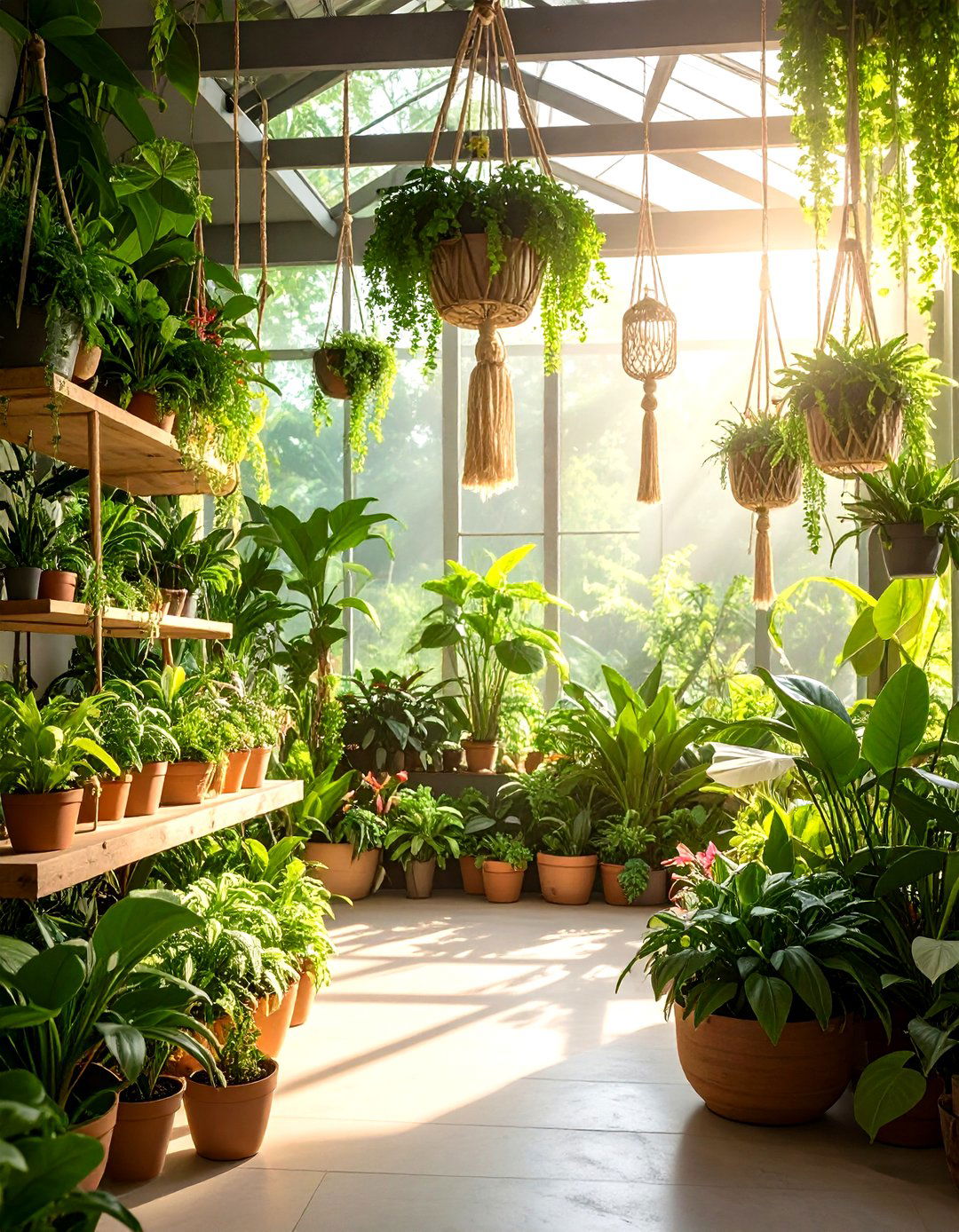
A single spider plant, peace lily, or Boston fern can help absorb airborne pollutants and bump indoor humidity to more skin-friendly levels. NASA research recommends at least one medium plant per 100 square feet for noticeable air-quality gains. Marcum's Nursery Place pots out of reach—macramé hangers or floating shelves deter tug-happy toddlers. Use organic potting soil and skip synthetic leaf shines; a quick wipe with a damp cloth keeps foliage breathing freely.
7. Natural Jute Rug Adds Cushioned Warmth without Synthetic Microfibers
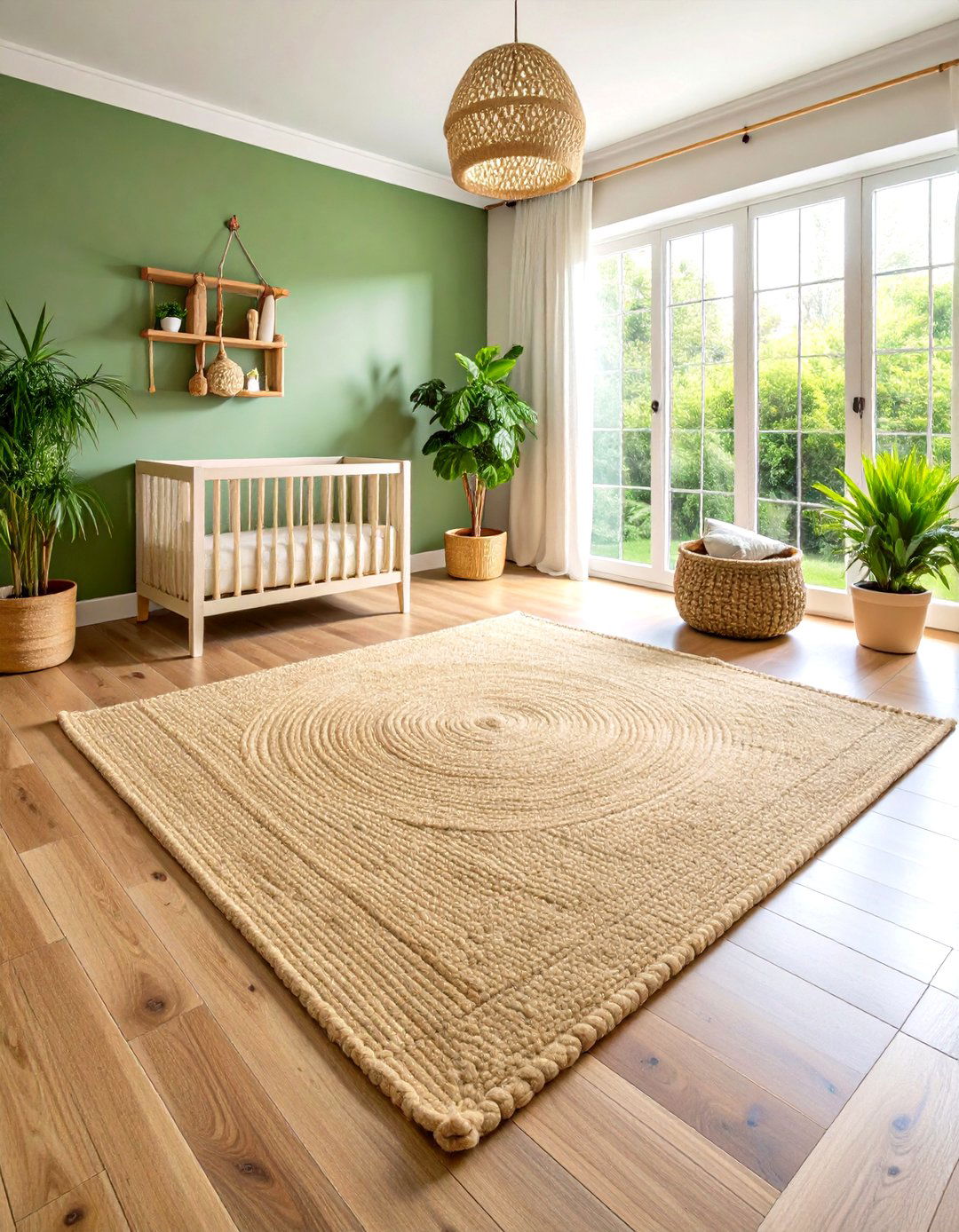
Hand-woven jute rugs deliver earthy texture, soft landings for new crawlers, and superior biodegradability at end-of-life. Jaipur Rugs Their dense weave traps less dust than plush synthetics, so a weekly shake-out outdoors often suffices. Anchor corners with natural-rubber rug pads to stop slips on hardwood floors. Spot-clean with a mild soap solution; harsh chemicals degrade jute fibers and leach toxins.
8. Cloth Diapering Station Cuts Waste and Saves Money
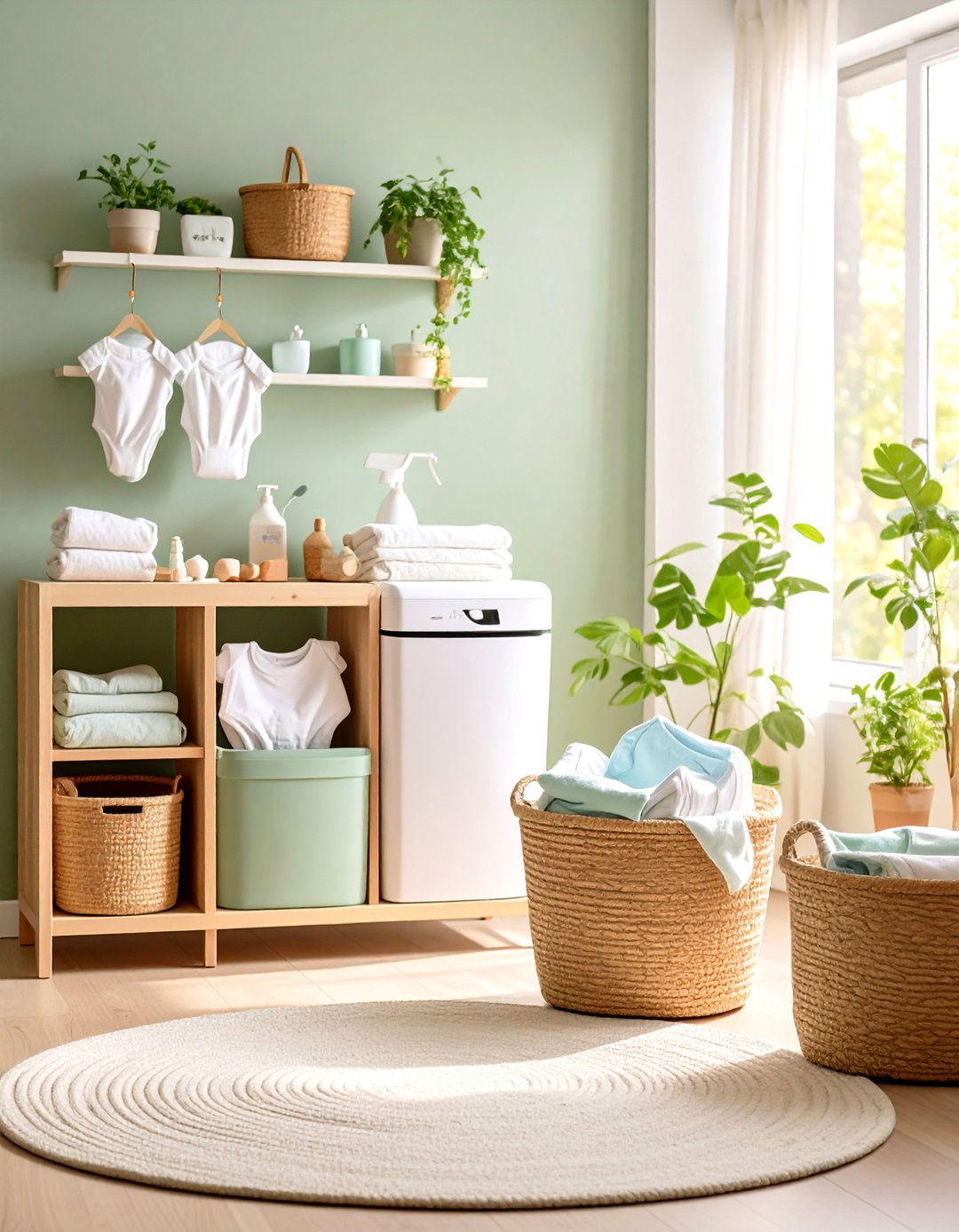
Reusable diapers can prevent thousands of disposables from entering landfills during a single child’s potty-training journey. Modern all-in-one or snap-in systems simplify changes and wash like regular laundry. LeafScore Designate an airflow-friendly pail with a washable liner, and add a small sprayer attachment to the toilet for easy pre-rinsing. Line-drying shells in sunlight naturally bleaches stains and kills bacteria, trimming utility costs further.
9. Second-Hand Swaps Keep Gear in Circulation for a Truly Green Nursery
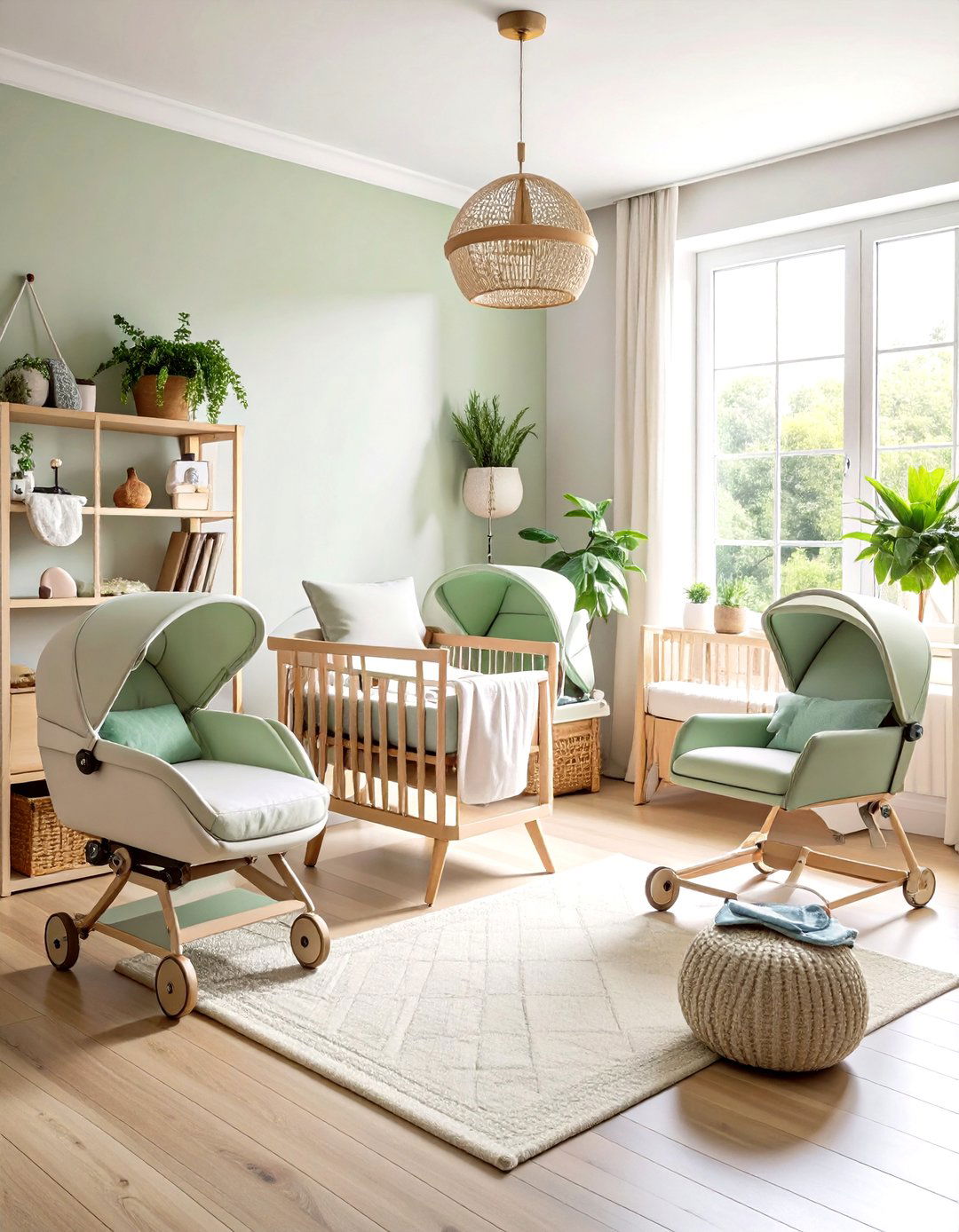
Borrowing or buying pre-loved bassinets, mobiles, and gliders slashes a product’s carbon footprint by up to 82 percent compared with new. Second Hugs Verywell Family Prioritize items with removable, washable covers for hassle-free sanitation. Always verify that used cribs meet current spacing and recall standards; when in doubt, check model numbers with consumer-safety databases. Hosting a neighborhood swap event builds community and keeps perfectly good gear in play.
10. Non-Toxic Toy Storage Corrals Clutter Sustainably
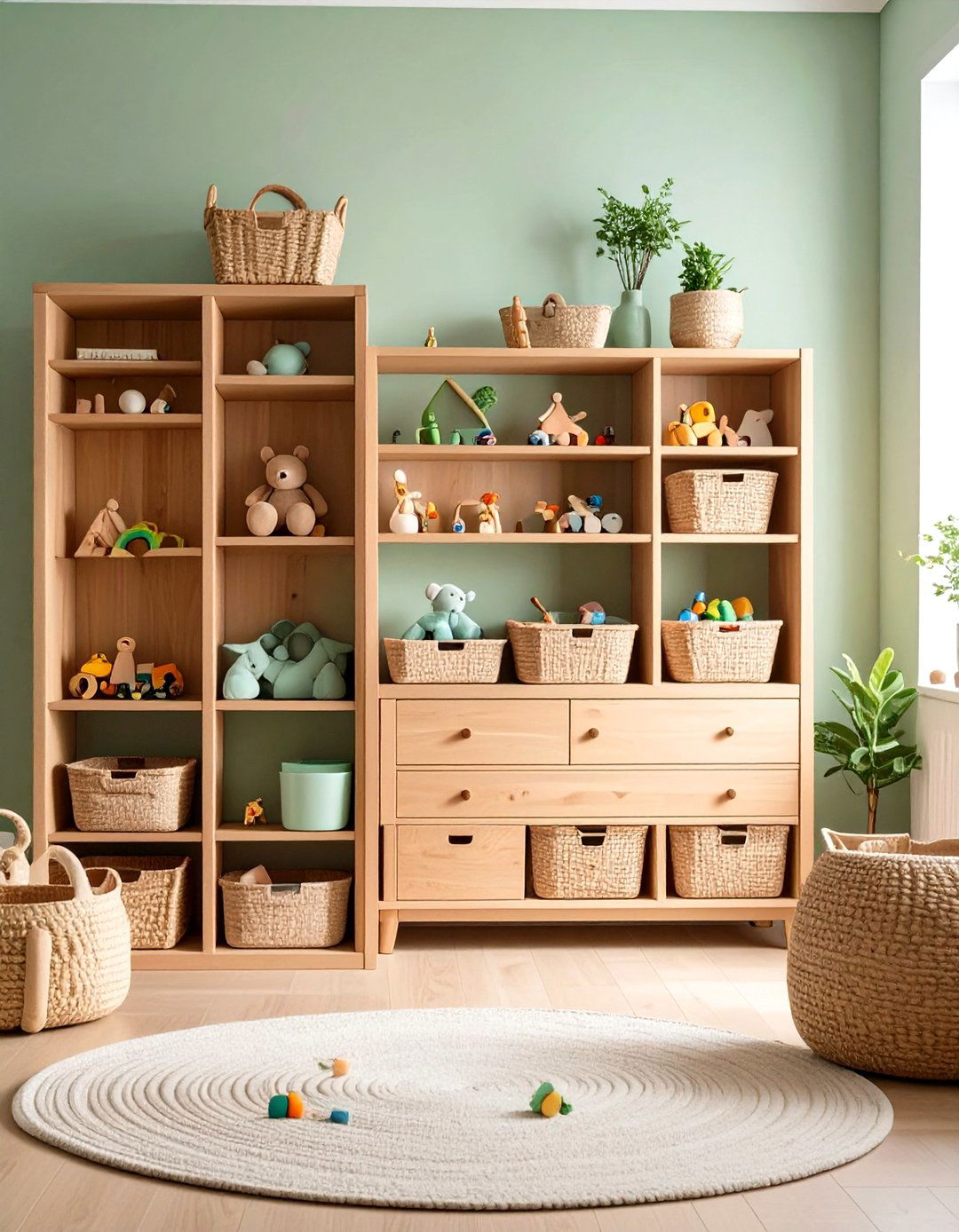
Solid-wood chests finished with water-based stains or hand-woven cotton baskets organize plush toys while avoiding off-gassing plastics. Low lids or open bins invite toddlers to participate in tidy-up routines, nurturing independence. Label baskets with simple pictograms so pre-readers know where items belong. Add felt pads to box bottoms to protect floors and allow quiet nighttime clean-ups.
11. Bamboo Shades Filter Light and Regulate Temperature Naturally
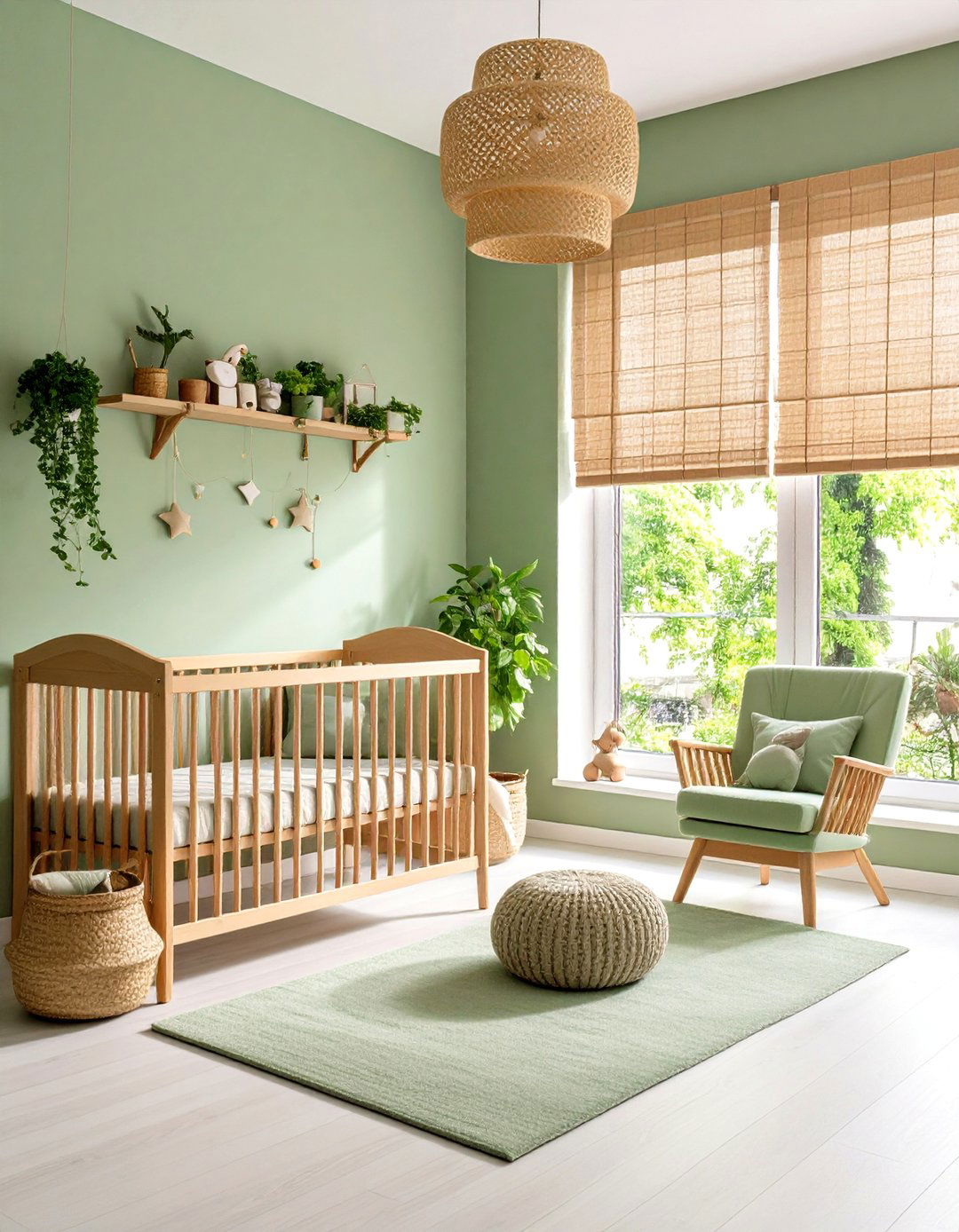
Fast-growing bamboo regenerates in as little as five years, making it a renewable superstar for window treatments. Cordless bamboo shades provide gentle diffused daylight, limit glare during naps, and promote privacy after dusk. The Home Depot Chicology Their neutral texture pairs effortlessly with green walls and jute rugs, tying the nature theme together. Dust weekly with a microfiber cloth; deep-clean annually with a damp sponge followed by air-drying.
12. Smart Thermostat Maintains Cozy Comfort with Minimal Energy
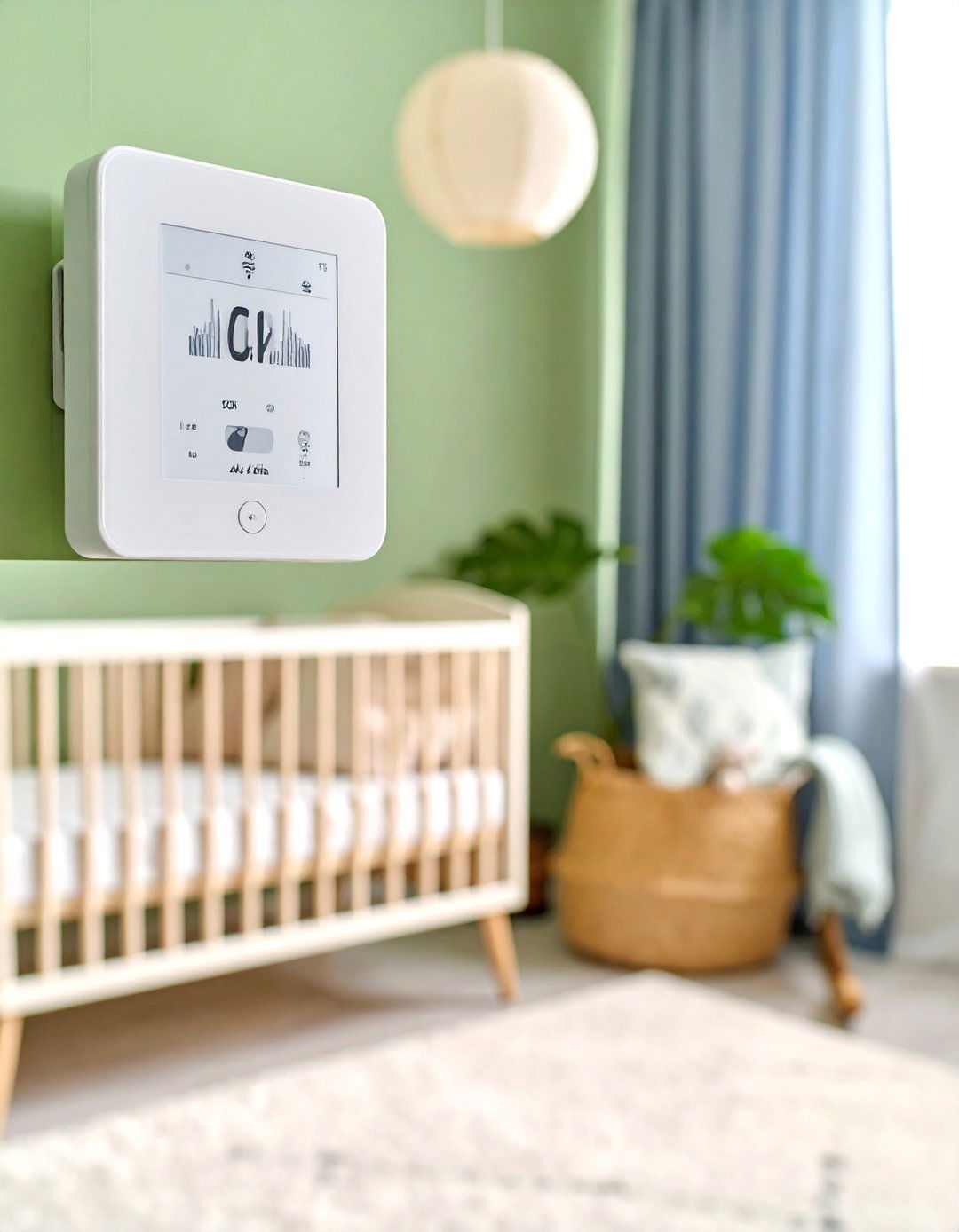
An ENERGY STAR-qualified smart thermostat can cut heating and cooling bills by about 8 percent annually by tailoring schedules to occupancy patterns. Energy Star Set a daytime baseline of 68–72 °F, then program gentle setbacks for overnight sleep when thicker PJs handle warmth. Smartphone alerts flag sudden temperature swings—perfect peace of mind on date night. Place the thermostat in the nursery’s main airflow path to guarantee accurate readings.
13. Cork Wall Panels Quiet the Space and Add Organic Texture
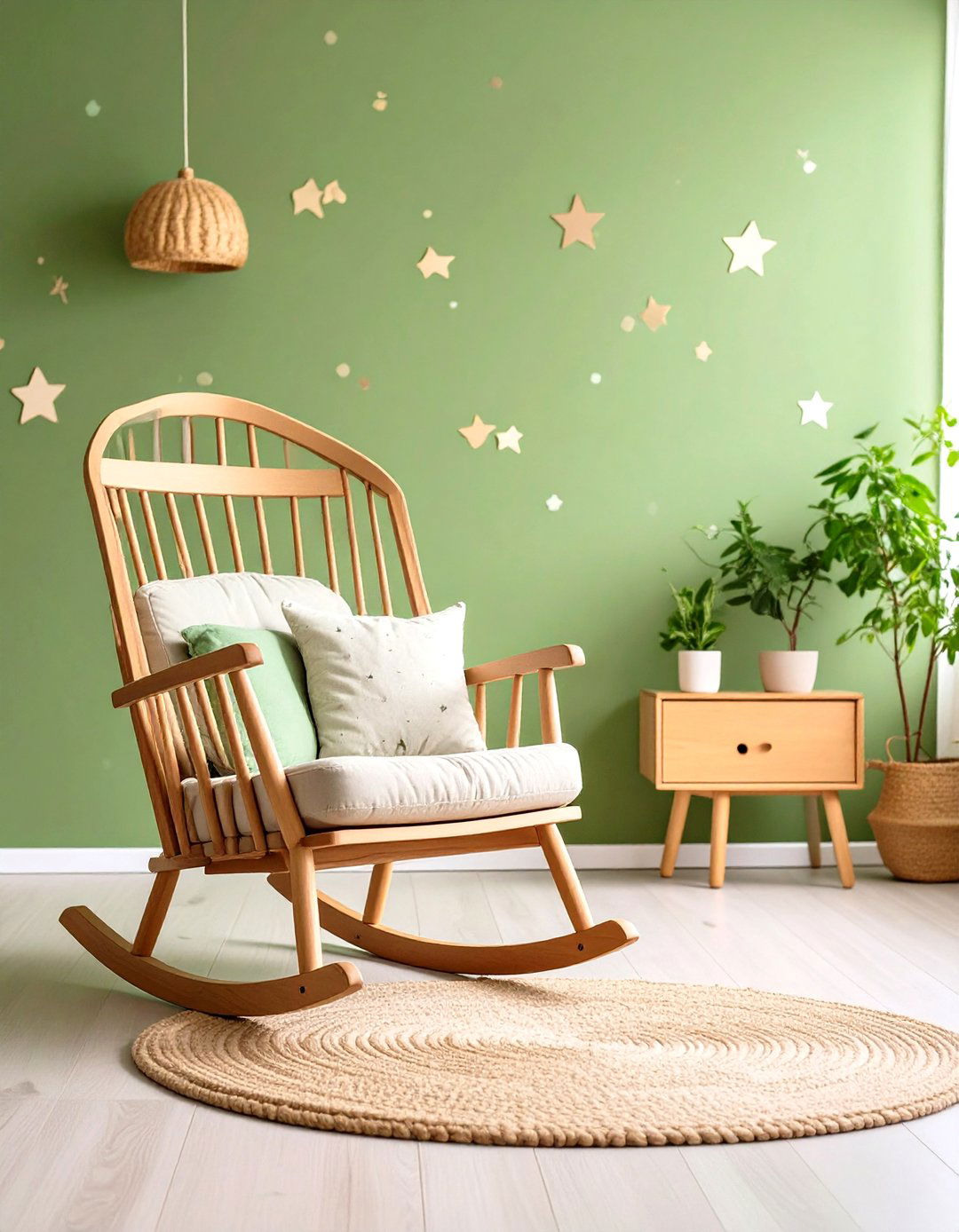
Lightweight cork tiles absorb echoes and insulate against temperature swings, creating a tranquil acoustic envelope around cribs. Sustainable Materials Naturally mold- and mildew-resistant, cork contributes to a healthier breathing environment. Install panels behind the rocking chair to soften story-time sound, or create a playful pin-board for artwork. A clear, plant-based sealer protects the surface from drool or sticky fingers without trapping VOCs.
14. Salvaged Wood Décor Infuses Story-Rich Character
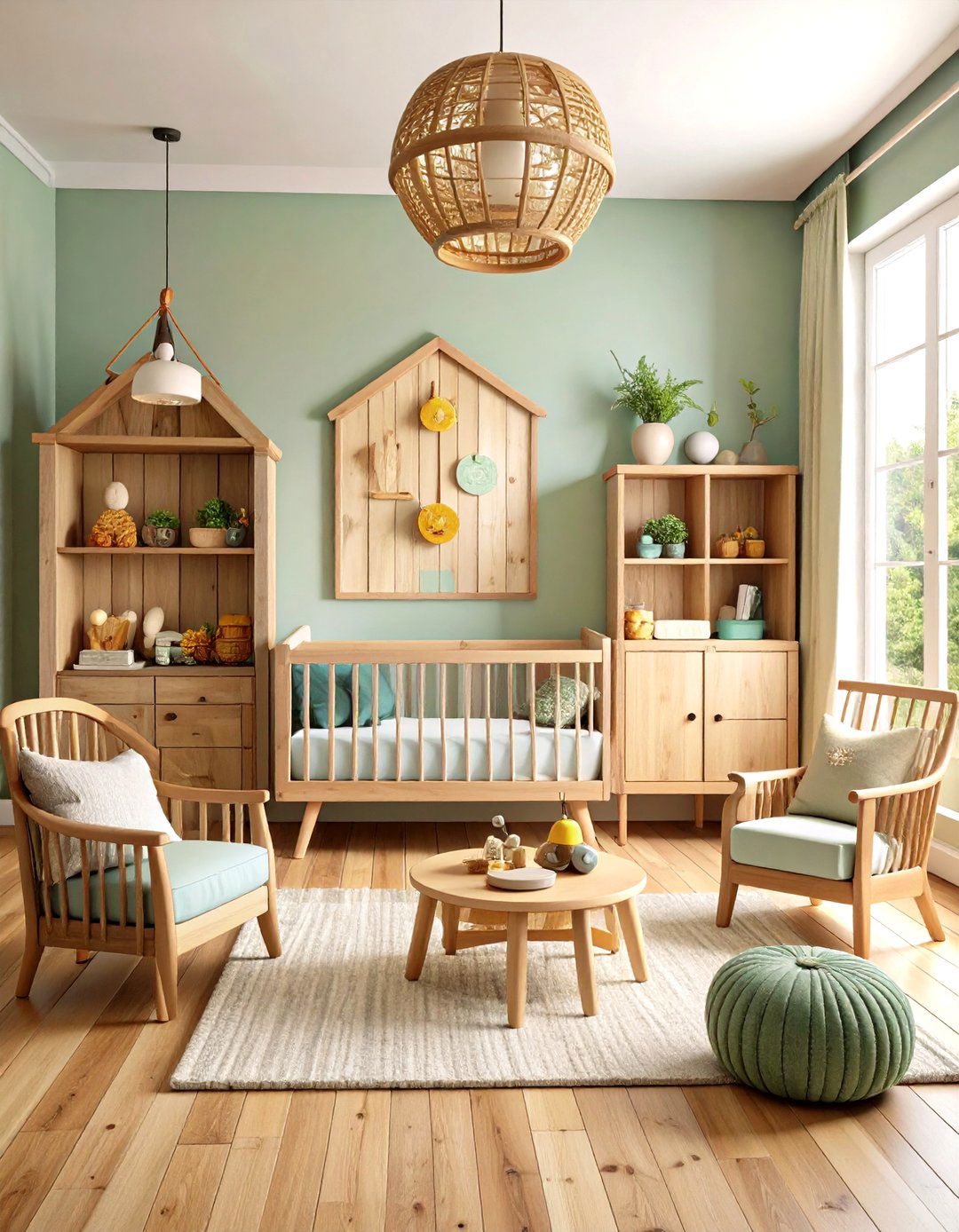
Framed art or name signs crafted from reclaimed barnwood transform scrap into statement pieces while locking stored carbon away from landfills. Etsy Better Homes & Gardens Light sanding preserves rustic patina; finish with beeswax polish for a baby-safe sheen and natural cedar scent. Hang with removable adhesive strips to avoid wall damage as layouts evolve. Each imperfection tells a tale, teaching little ones early lessons in valuing resources.
15. Biophilic Murals Spark Imagination and Cognitive Growth
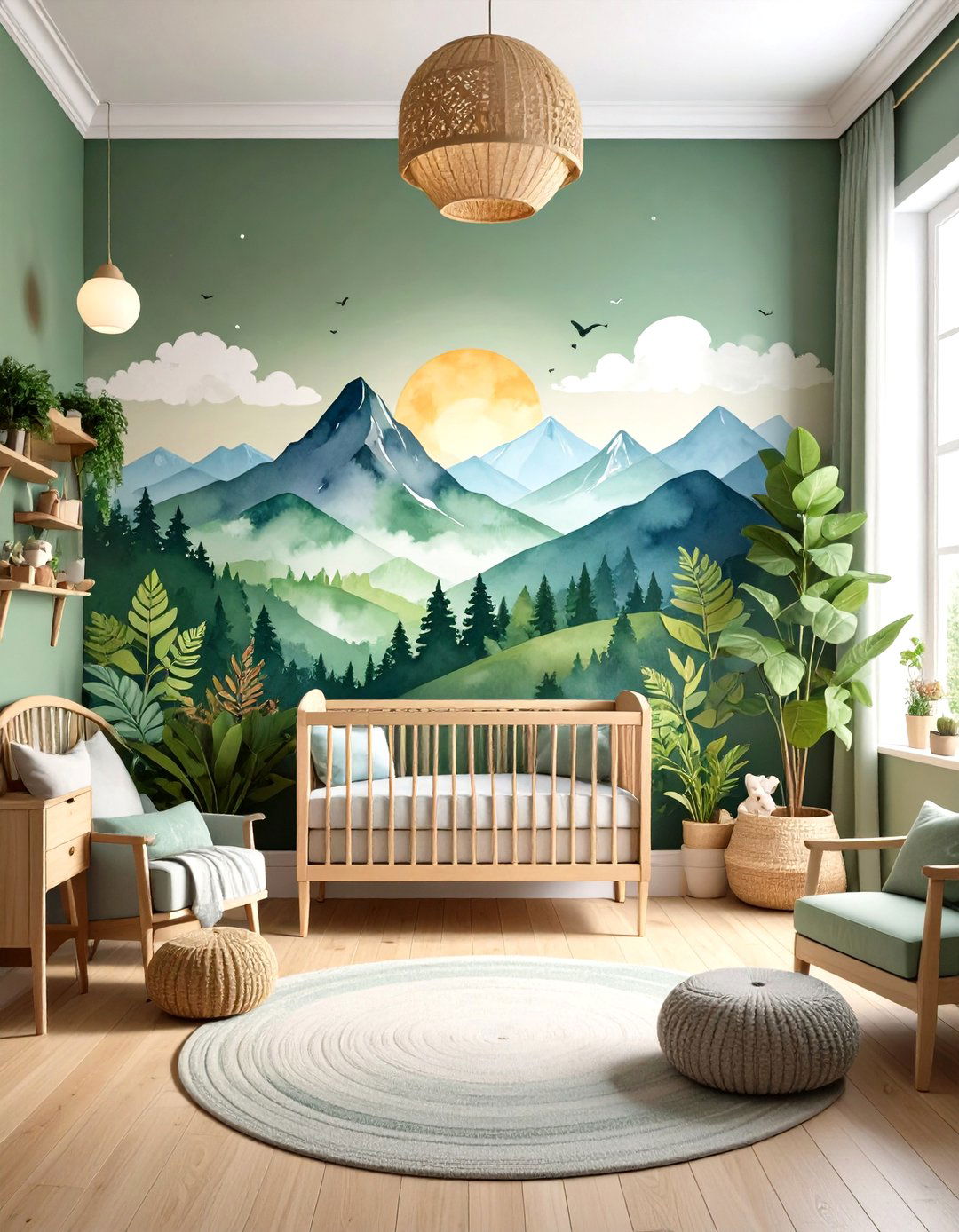
Large-scale nature imagery—think watercolor leaves or mountain silhouettes—immerses babies in visual cues proven to enhance concentration and reduce stress. wellness design consultants EcoParent Choose low-VOC, water-based paints or fabric wall hangings for installation. Position the mural opposite the crib so infants can gaze at calming scenery during wake windows. For a tactile twist, frame sections of real bark or pressed leaves at baby-safe heights for supervised touch exploration.
16. Modular Furniture Evolves with Your Child and Shrinks Waste
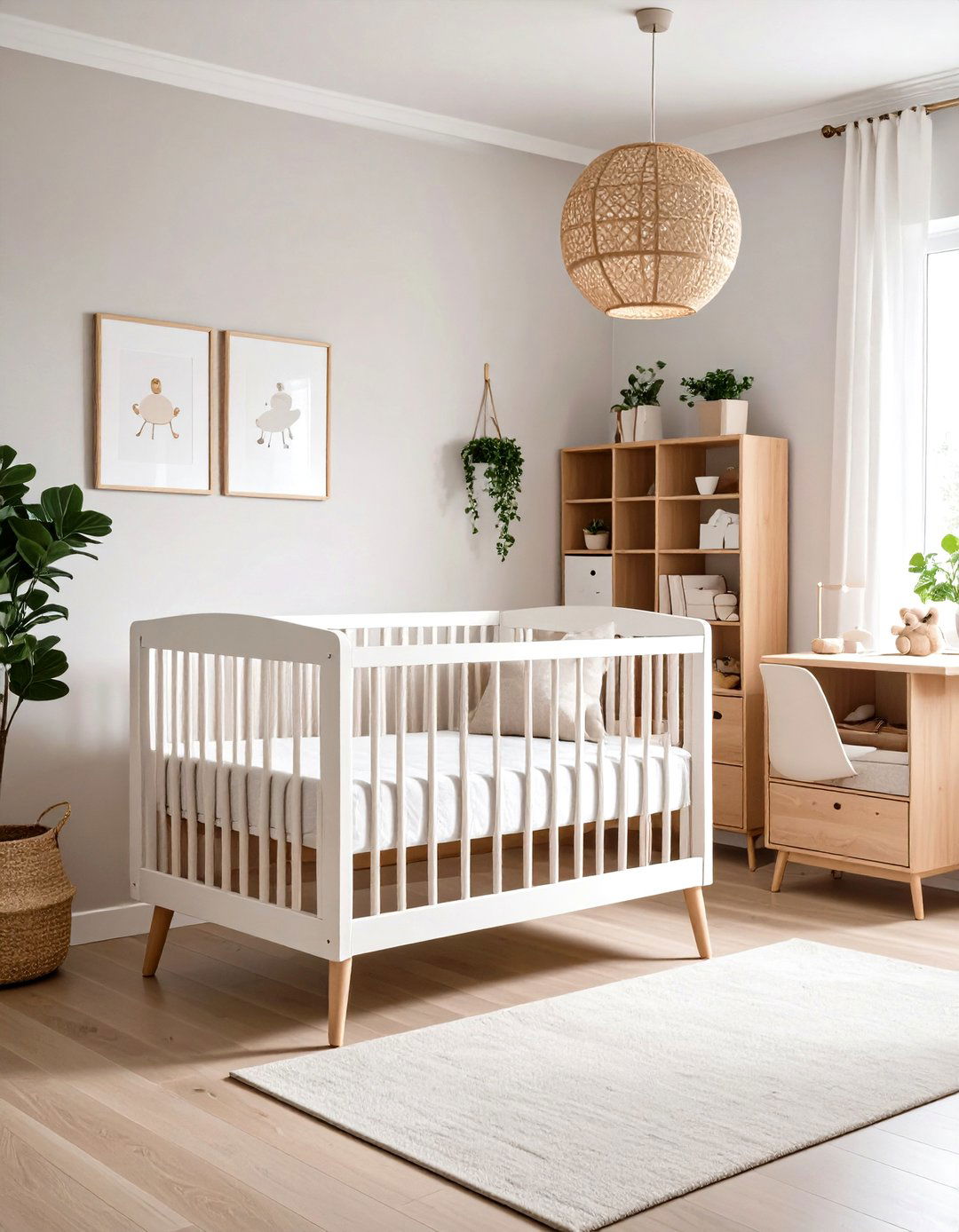
Convertible cribs that shift to toddler beds, desks, or reading benches stretch a single purchase across multiple stages—saving resources and parental budgets alike. The Good Trade The Good Trade Look for tool-free conversion kits and solid joinery to withstand years of reconfiguration. Pair with stackable, FSC-certified storage cubes that can migrate to playrooms later, ensuring every piece enjoys a long, useful life before recycling.
17. Sustainable Laundry Habits Keep Green Nursery Textiles Fresh
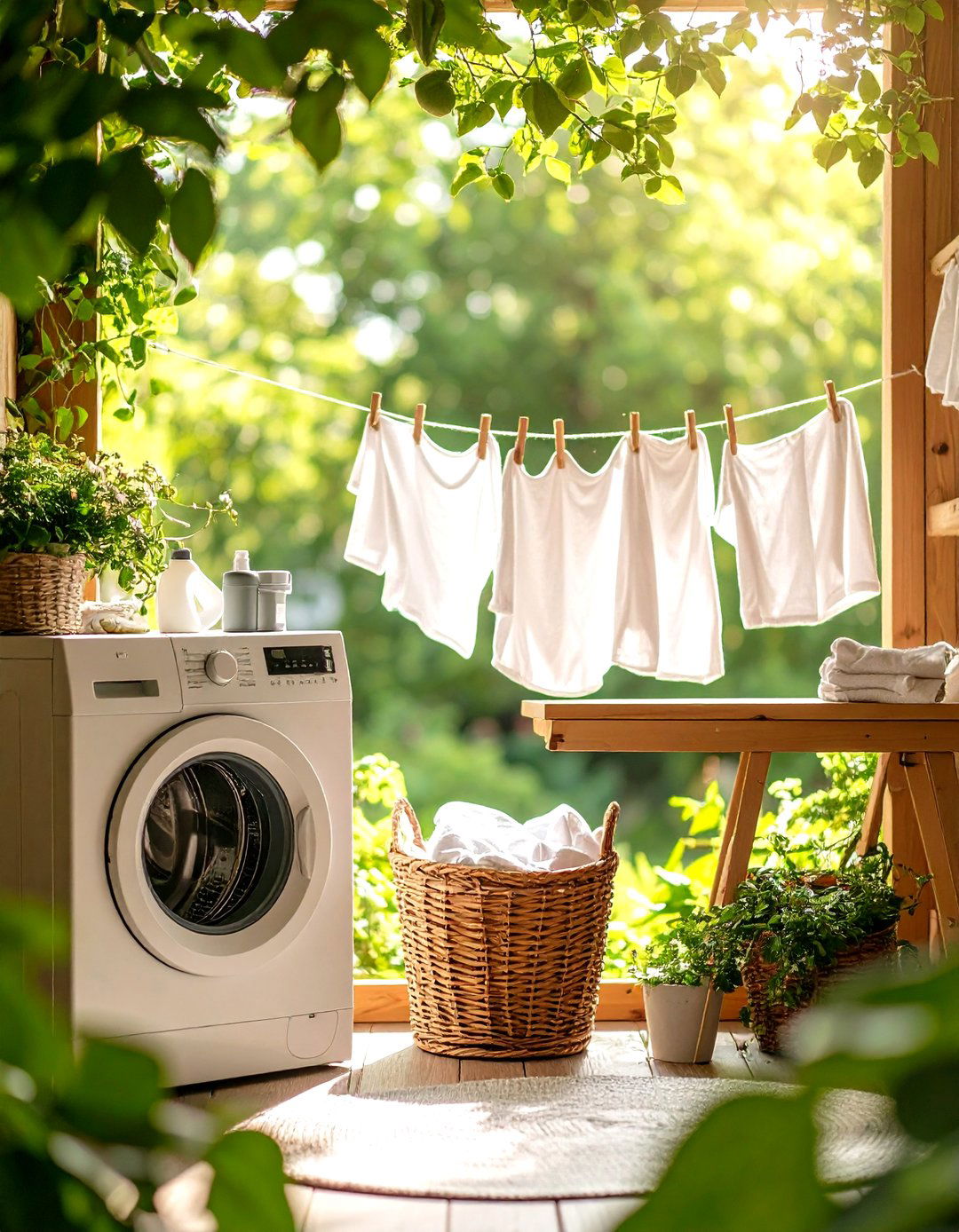
Plant-based detergents free of dyes and optical brighteners protect sensitive skin and aquatic ecosystems once rinsed away. Rebel Green Verywell Family Wash full loads on cold to save energy and line-dry when weather allows; ultraviolet rays naturally disinfect and brighten whites. Keep a small bucket for soaking tough stains in biodegradable oxygen booster—no chlorine bleach needed. Regularly clean the machine’s gasket with vinegar to prevent mildew smells.
18. Bamboo Changing Pad Covers Offer Softness without Synthetics

Rayon made from bamboo fibers delivers a silky, hypoallergenic surface that washes well and dries fast—critical for frequent swaps. Kyte Baby Elastic edges ensure a snug, secure fit on standard pads, preventing bunching under wiggly infants. Keep two or three covers on rotation to avoid late-night laundry emergencies. Retire worn-out covers into cleaning rags, extending usefulness before composting.
19. Water-Based Wall Decals Refresh Décor with Zero Residue

Peel-and-stick fabric decals printed using water-based inks add whimsy to walls yet remove cleanly as tastes change, eliminating repaint cycles. Wall Dressed Up LeafScore Arrange decals at eye level for crawling explorers to admire, or scatter stars near the ceiling for a gentle bedtime sky. Store backing paper in the closet; decals can be repositioned up to 100 times without losing cling.
20. Plant-Based Floor Finish Seals and Protects with Low Odor
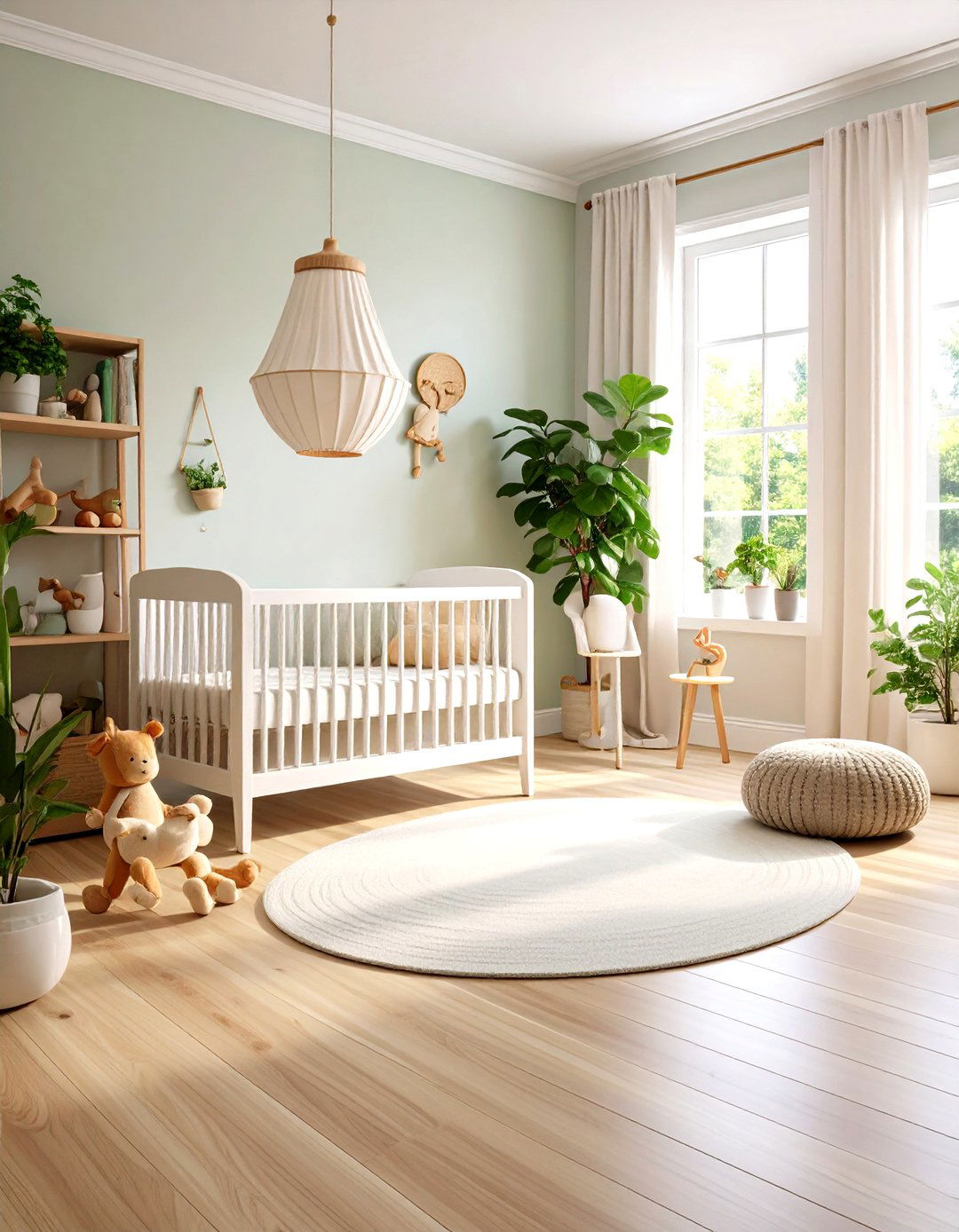
Advanced bio-polyurethane sealers cure into a durable, scratch-resistant layer while releasing only minimal VOCs—perfect for crawling stages when mouths meet floors. My Chemical-Free House Apply three thin coats with a microfiber roller, sanding lightly between layers for a satin feel. Most formulas reach full hardness within a week; schedule application before bringing in rugs to avoid trapping moisture. Regular damp-mopping with a mild soap keeps the floor spotless and safe for play.
Conclusion:
Designing a green nursery is less about perfection and more about thoughtful swaps that collectively nurture your child and the Earth. From low-VOC paints and FSC furniture to smart thermostats and plant-based detergents, each choice improves air quality, conserves resources, and teaches lifelong stewardship. Embrace what fits your family, iterate as needs grow, and watch your eco-friendly haven flourish alongside your baby.


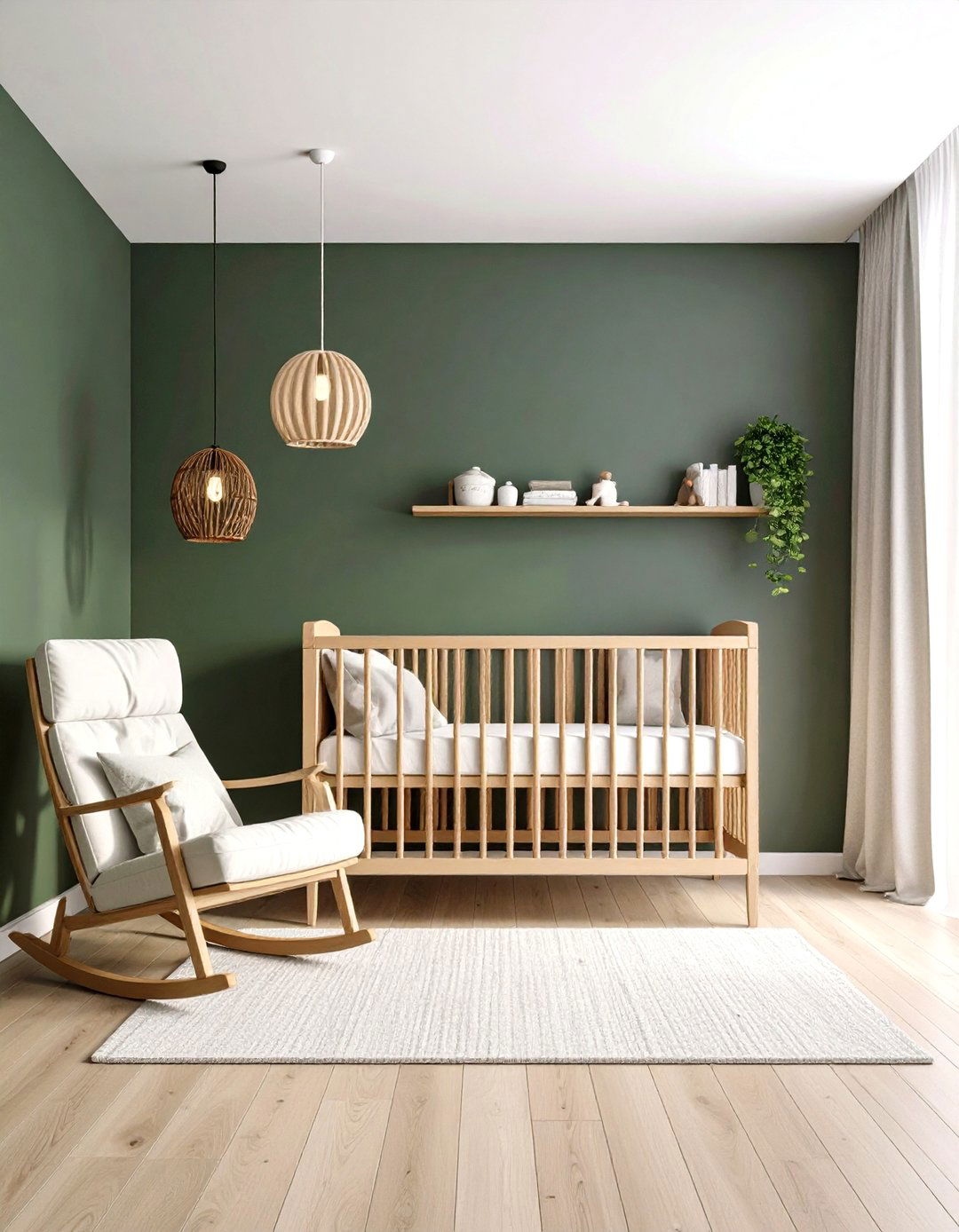
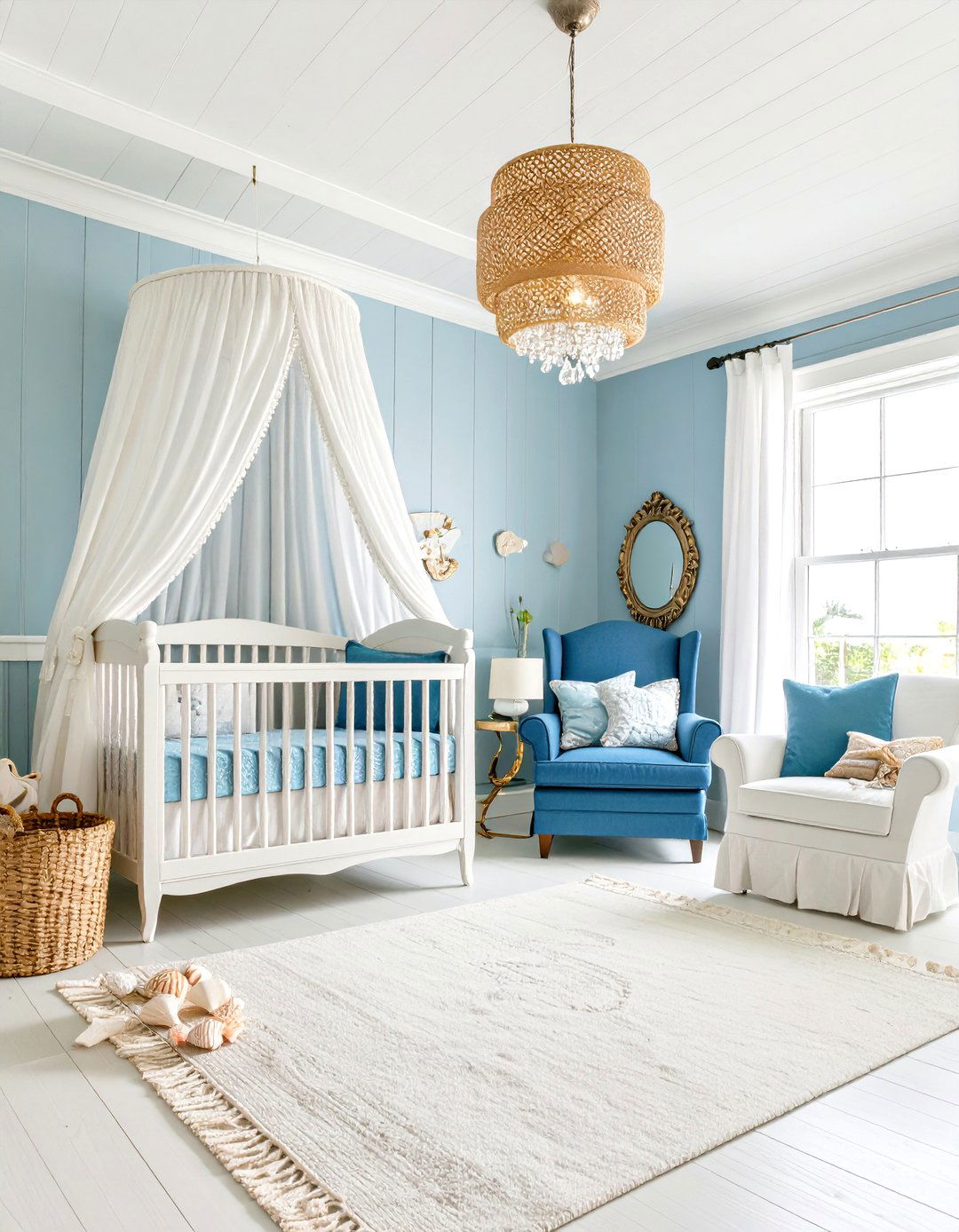


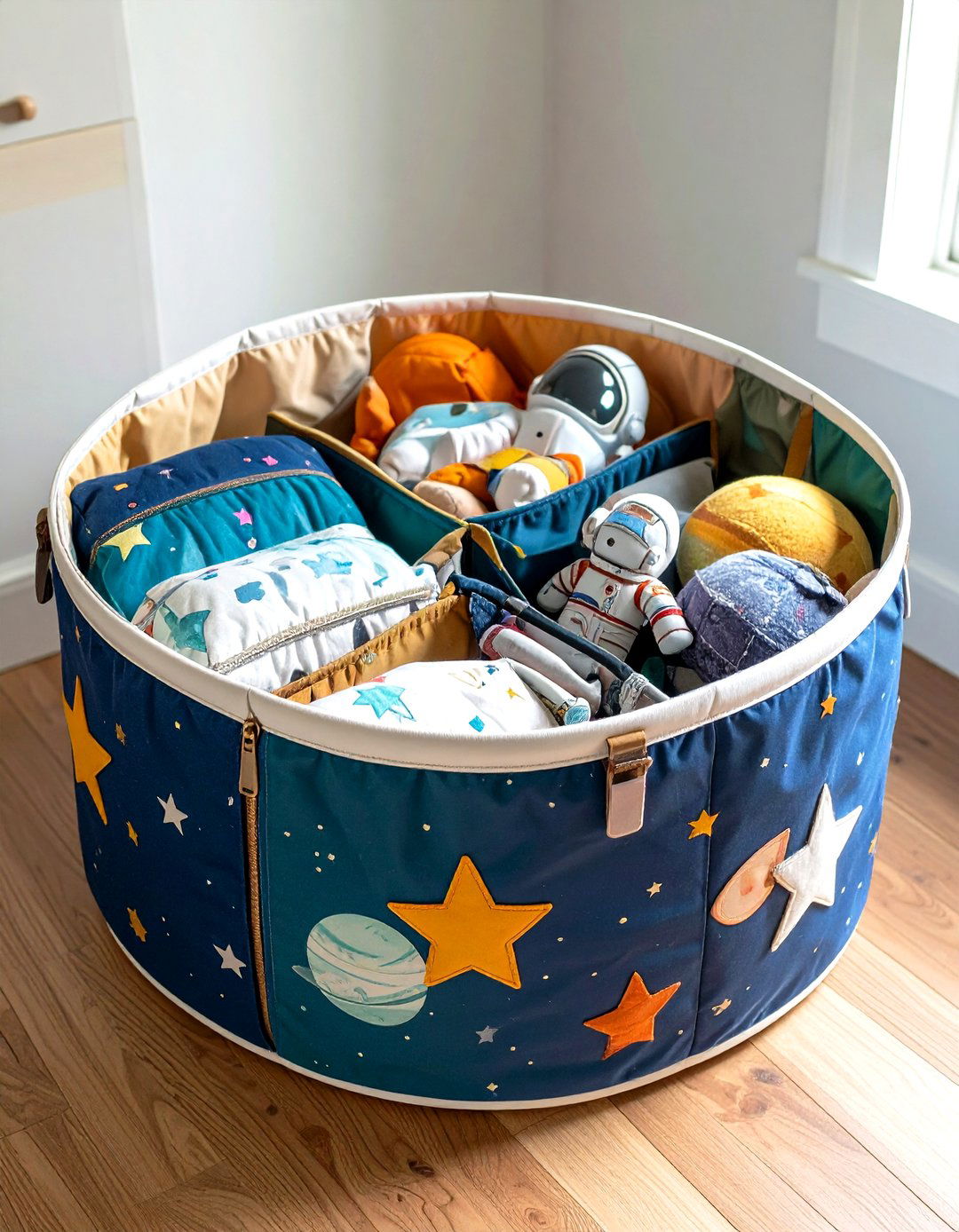
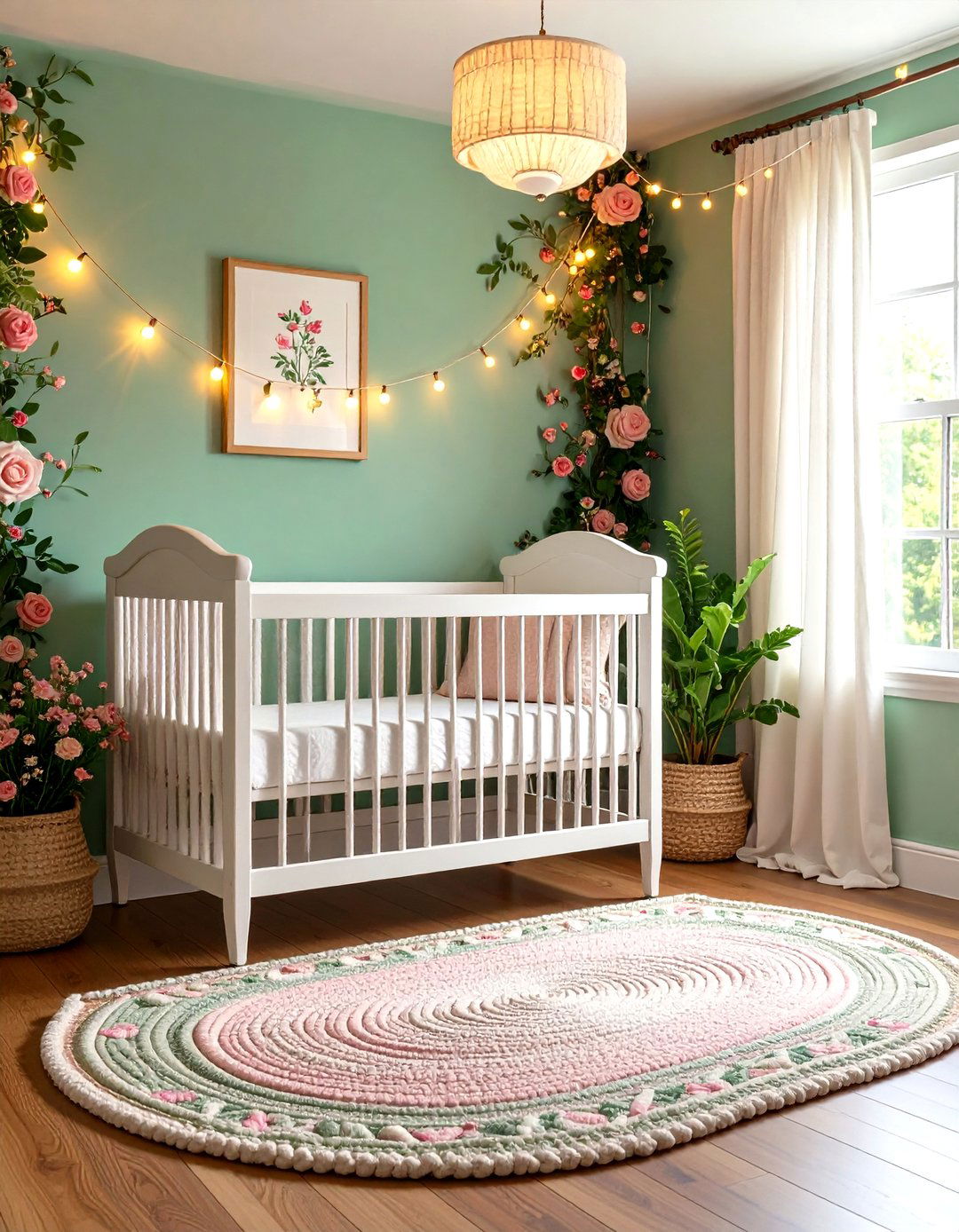
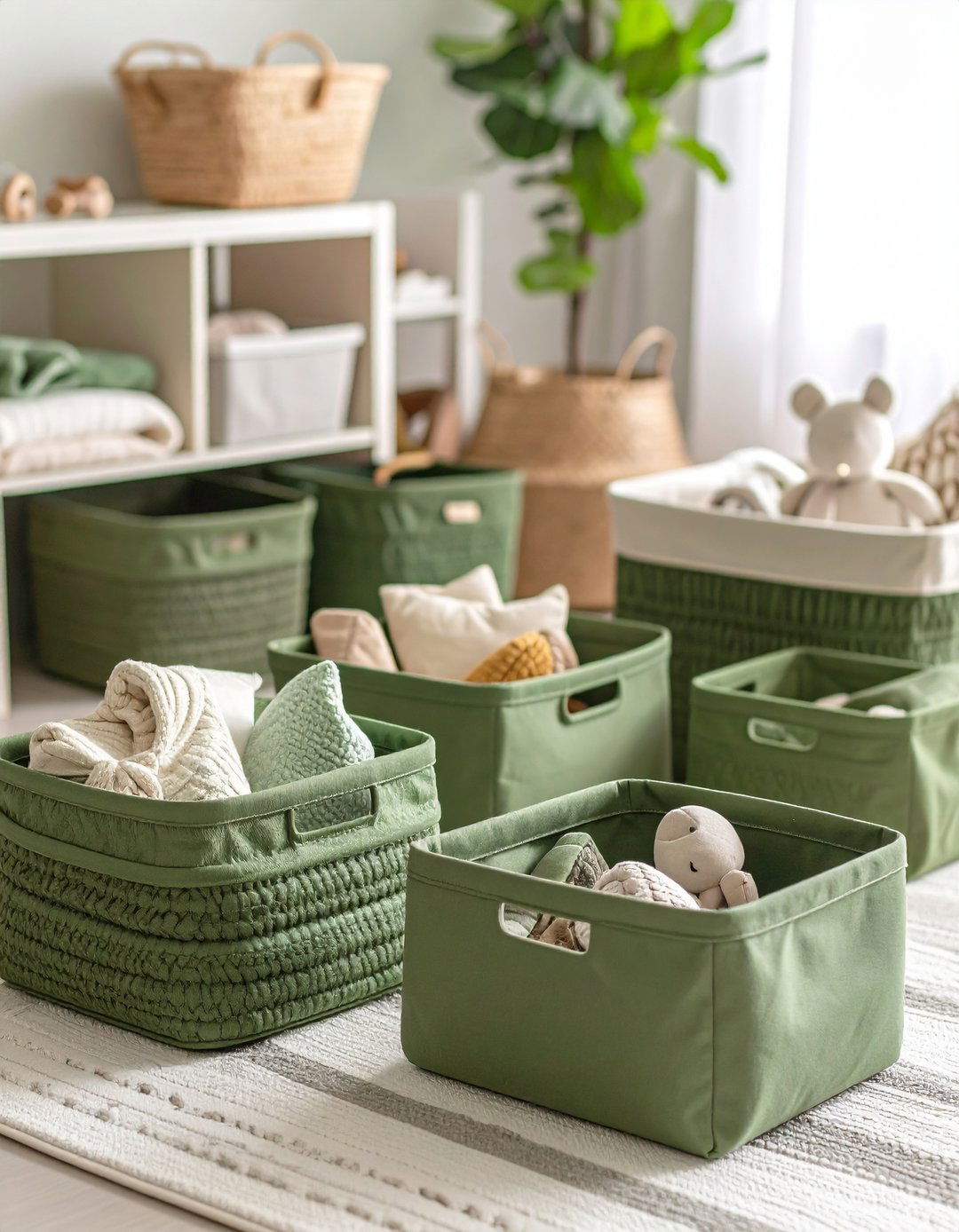
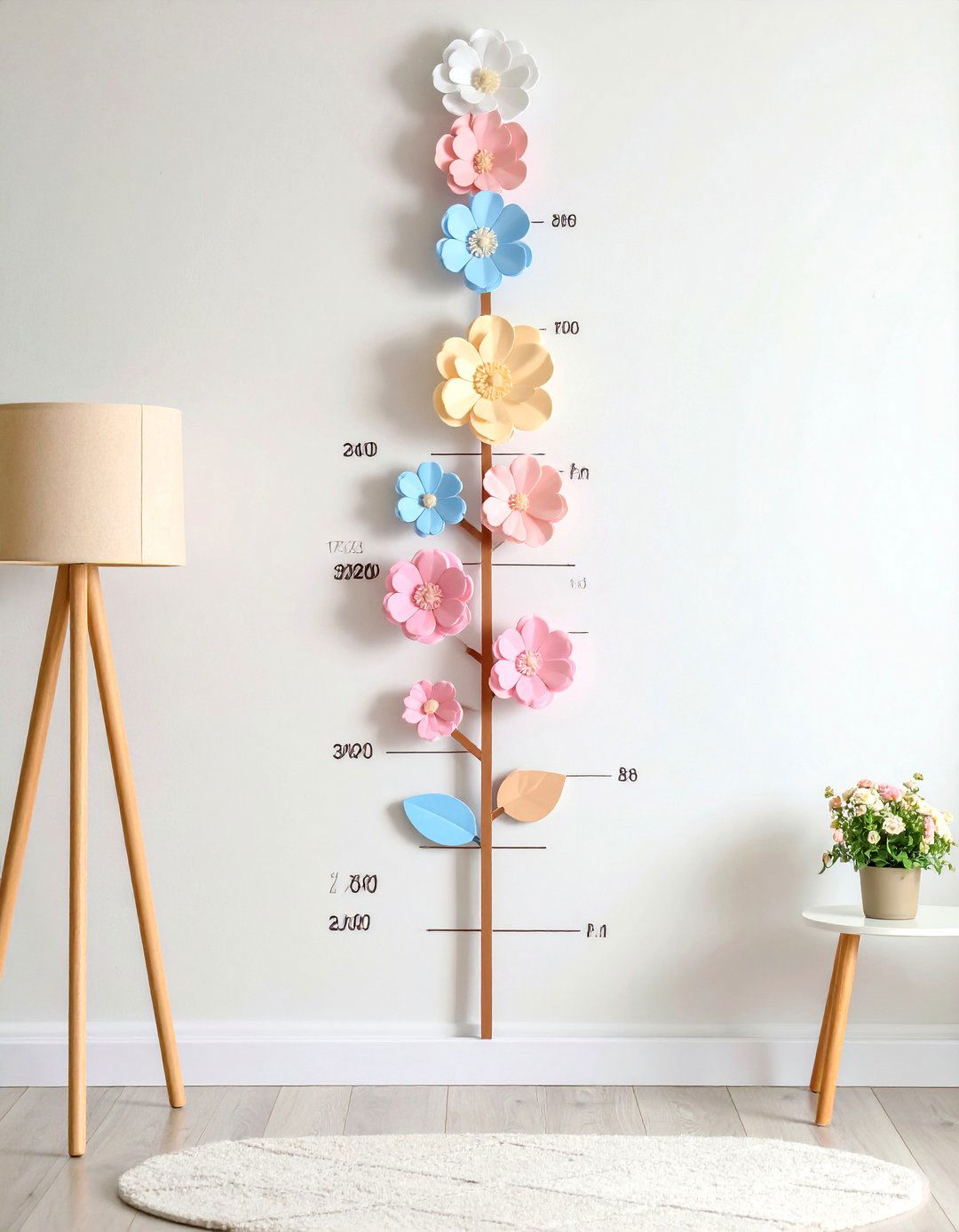
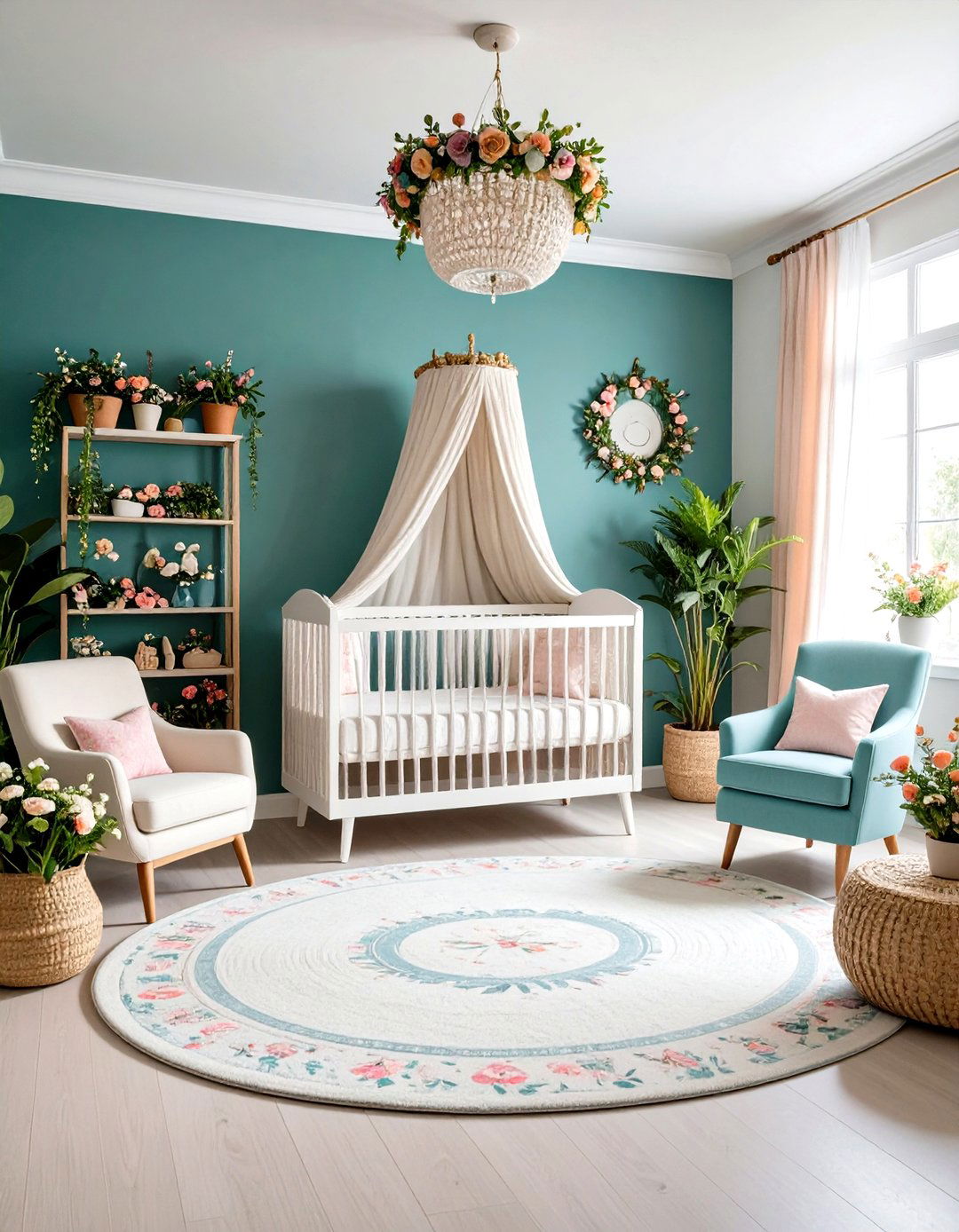
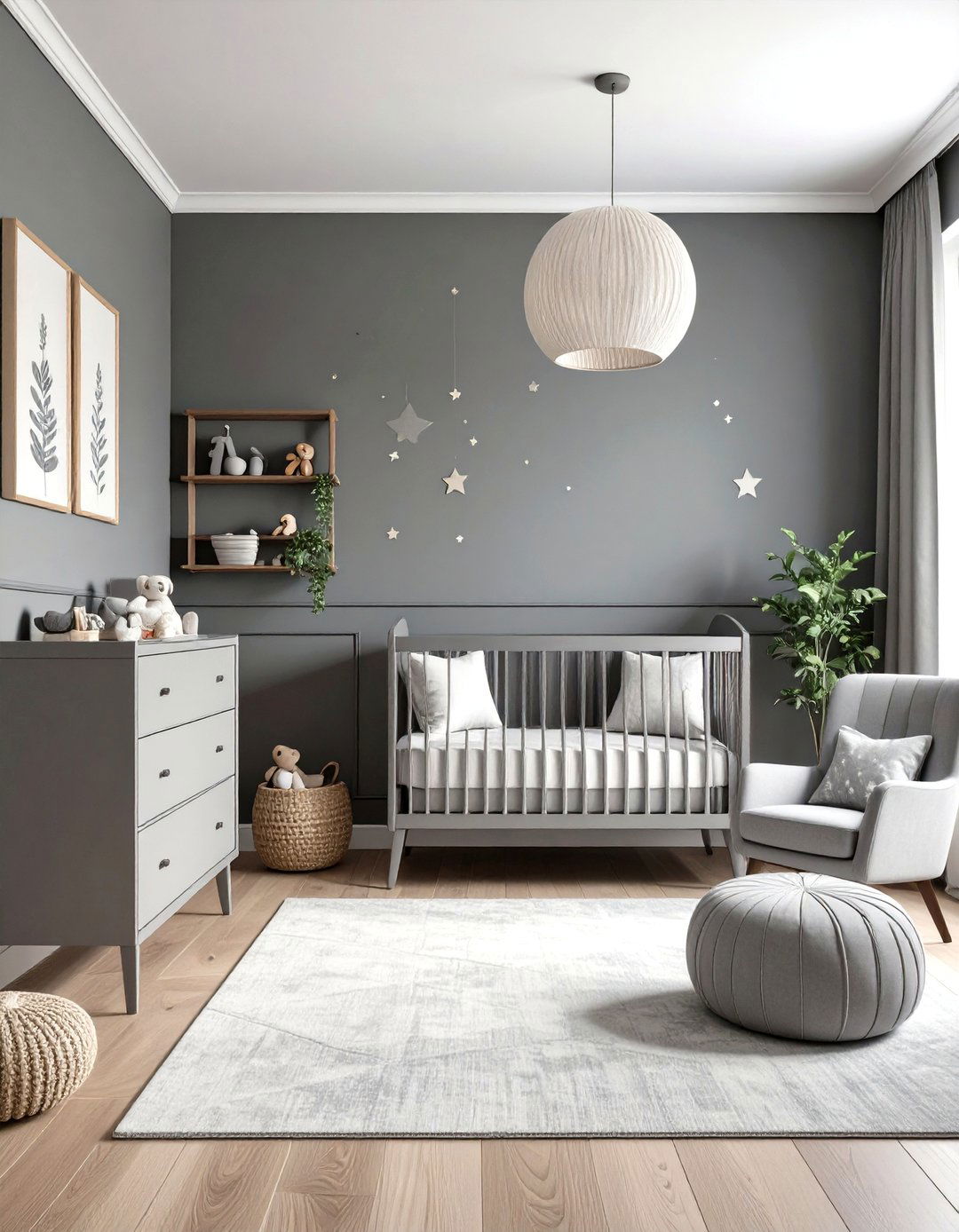
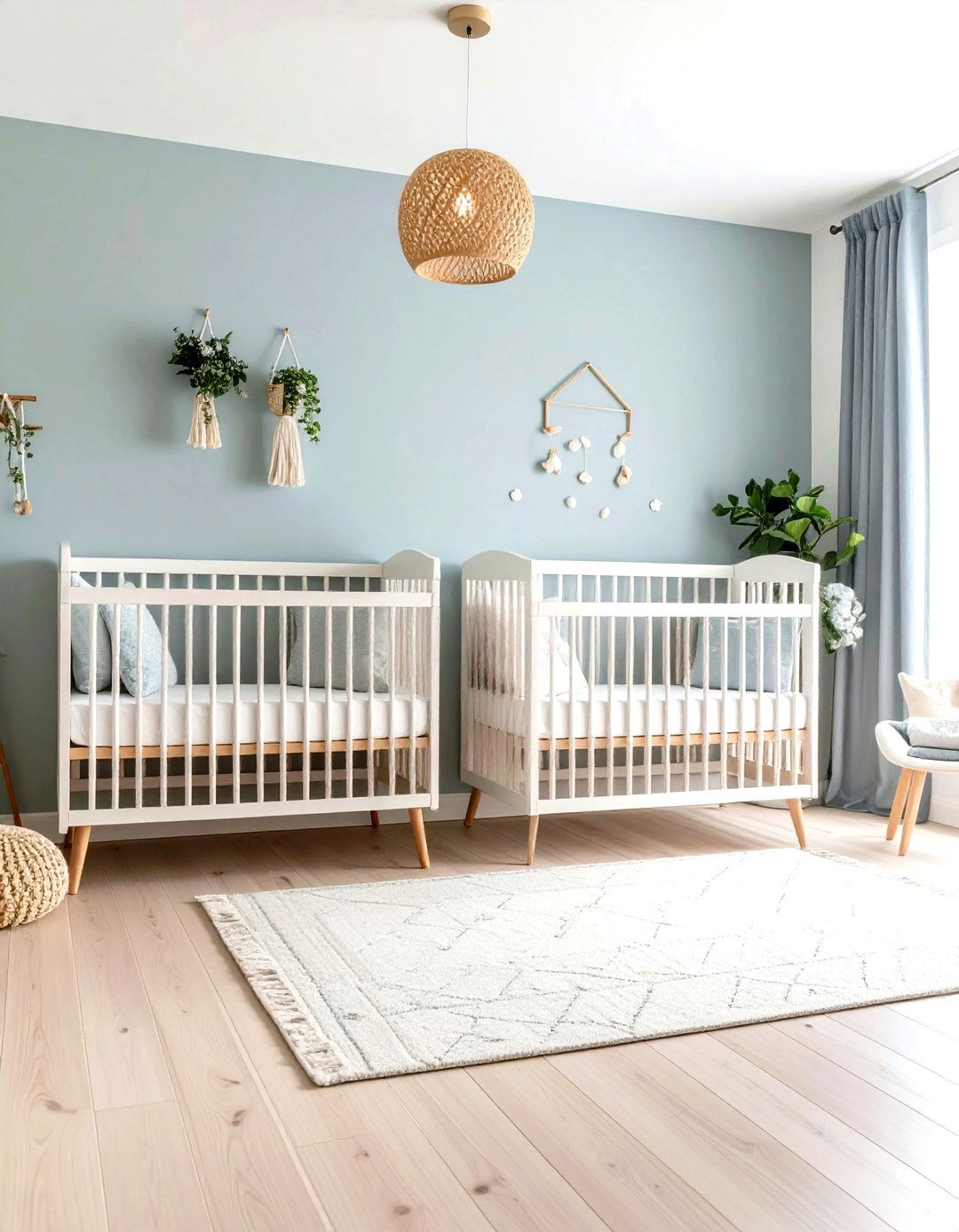
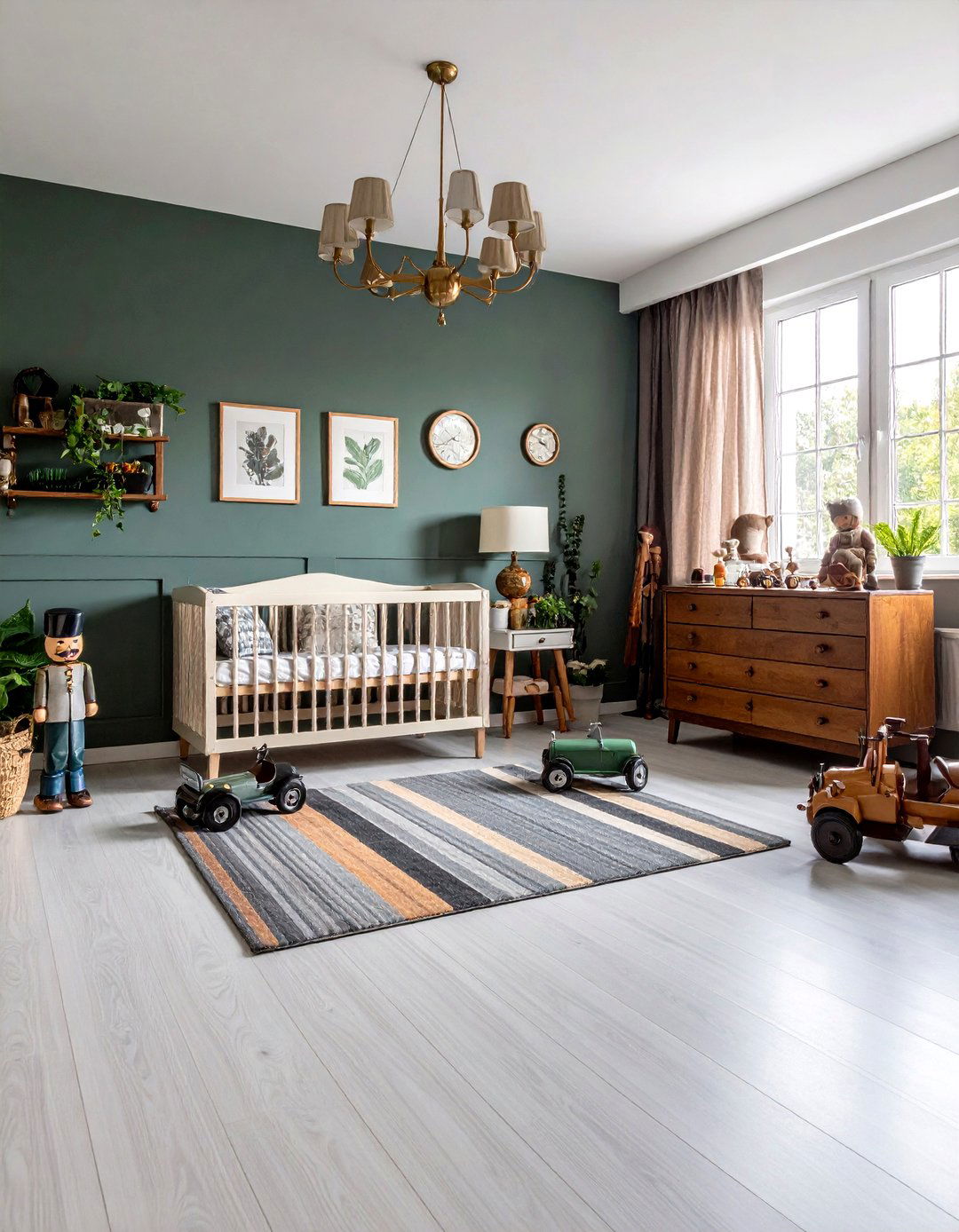
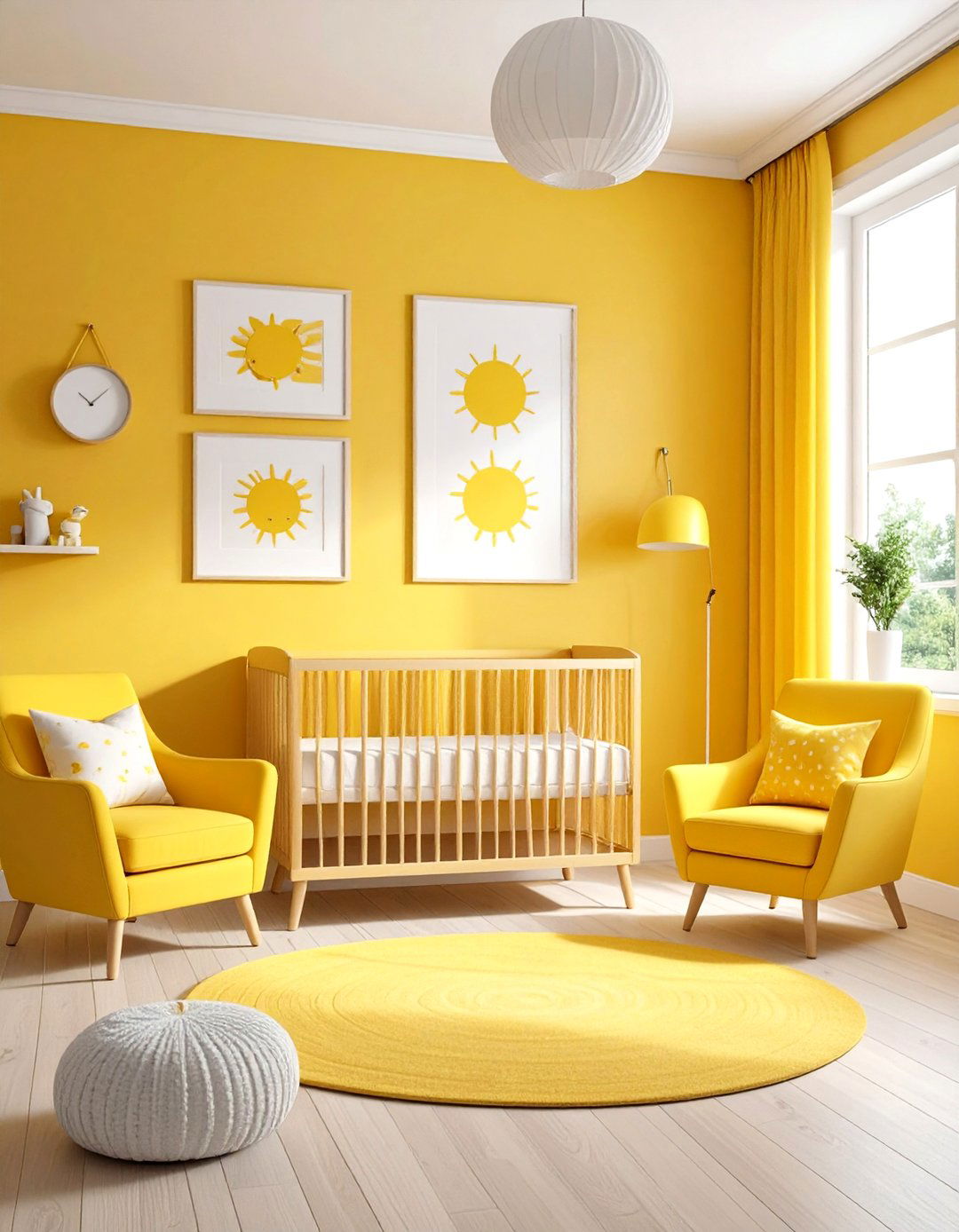
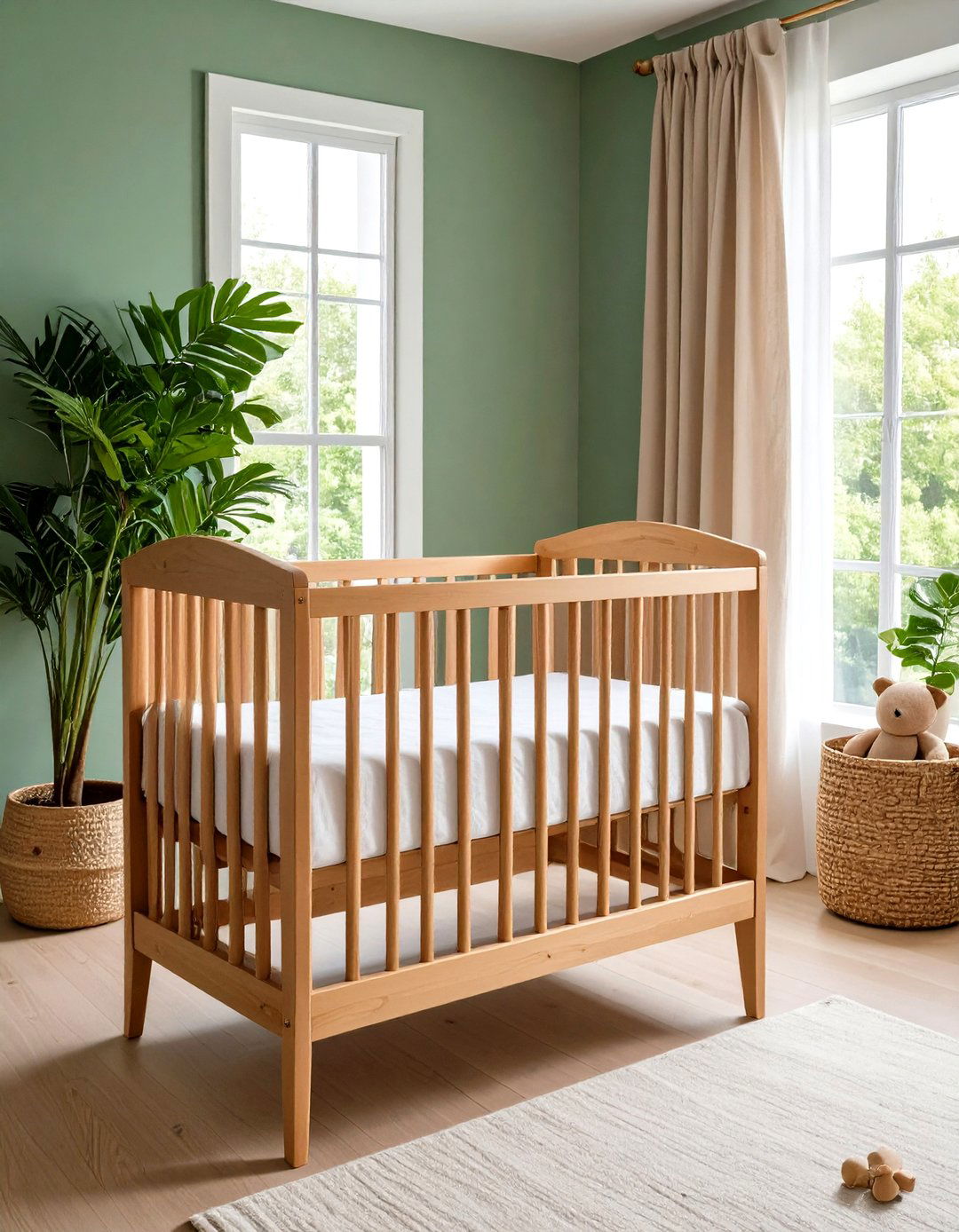
Leave a Reply